-
Crisis Response Networks: Wartime Civic Engagement in Ukraine’s Local Governments
In times of war, governance tends to become more centralized, top-down, and security-driven (Hart, Rosenthal and Kouzmin 1993, Kyvelou and Marava 2017). Democratic participation is often suspended in favor of executive control (Lasswell, 1941; Desch, 1996; Lowande & Rogowski, 2021).
Yet in Ukraine, despite the ongoing full-scale Russian invasion and the constraints of martial law (Rabinovych et al., 2025), many local governments (hromadas) have continued to involve civil society in crisis response (Keudel & Huss, 2024). Rather than being sidelined, civic actors in many communities have remained engaged in local decision-making, resource coordination, and public service delivery.
This article examines how Ukrainian hromadas have sustained civic engagement in local crisis governance during wartime. Leveraging survey and case findings, we show a clear pattern: collaborative participation can enhance preparedness and help maintain democratic legitimacy even under martial law.
Drawing on survey and interview data from over 180 municipalities, we argue that Ukraine offers an instructive case of collaborative crisis governance – a mode of network-based governance in which local authorities engage other stakeholders to gain resources, knowledge, and coordination capacity to collective problem-solving.
This article draws on the findings of ICLD Research Report No. 33, Local Democracy and Resilience in Ukraine: Learning from Communities’ Crisis Response in War, authored by Oleksandra Keudel, Oksana Huss, Valentyn Hatsko, Andrii Darkovich. We gratefully acknowledge the generous financial and institutional support of the Swedish International Centre for Local Democracy (ICLD), whose funding made this project possible and enabled our collaborative research on wartime local democracy and community resilience in Ukraine.
The full survey dataset used in this research has been published on DiscussData and is ferry available for download
Ukraine’s Decentralization Reform Before and After the Full-Scale Invasion
Since 2014, Ukraine’s decentralization reform has fundamentally transformed local governance. The reform transferred key responsibilities—budgeting, public services, and local development—to newly amalgamated municipalities (hromadas), giving them greater autonomy and financial capacity. This shift fostered a more responsive and participatory model of governance and created institutional conditions for collaborative practices between local authorities, civil society, and businesses.
However, the introduction of martial law due to Russia’s full-scale invasion has led to changes in the areas of responsibility of local self-government (LSG). Emergency coordination, defence logistics, and civil protection were partly recentralized, and regional state administrations were converted into military administrations with expanded authority. Military personal income tax, a growing share of local budgets in affected areas, was reallocated to the national level. In frontline areas, 13% of hromadas now operate under military administrations, heads of which are appointed by the president.
Despite these constraints, the suspension of elections, and many challenges in public informing and engagement (Figure 1), local governments have remained key actors in wartime governance. They continue to maintain public services, coordinate humanitarian aid, and support displaced populations.
Figure 1. Challenges of public informing and engagement initiatives at times of war
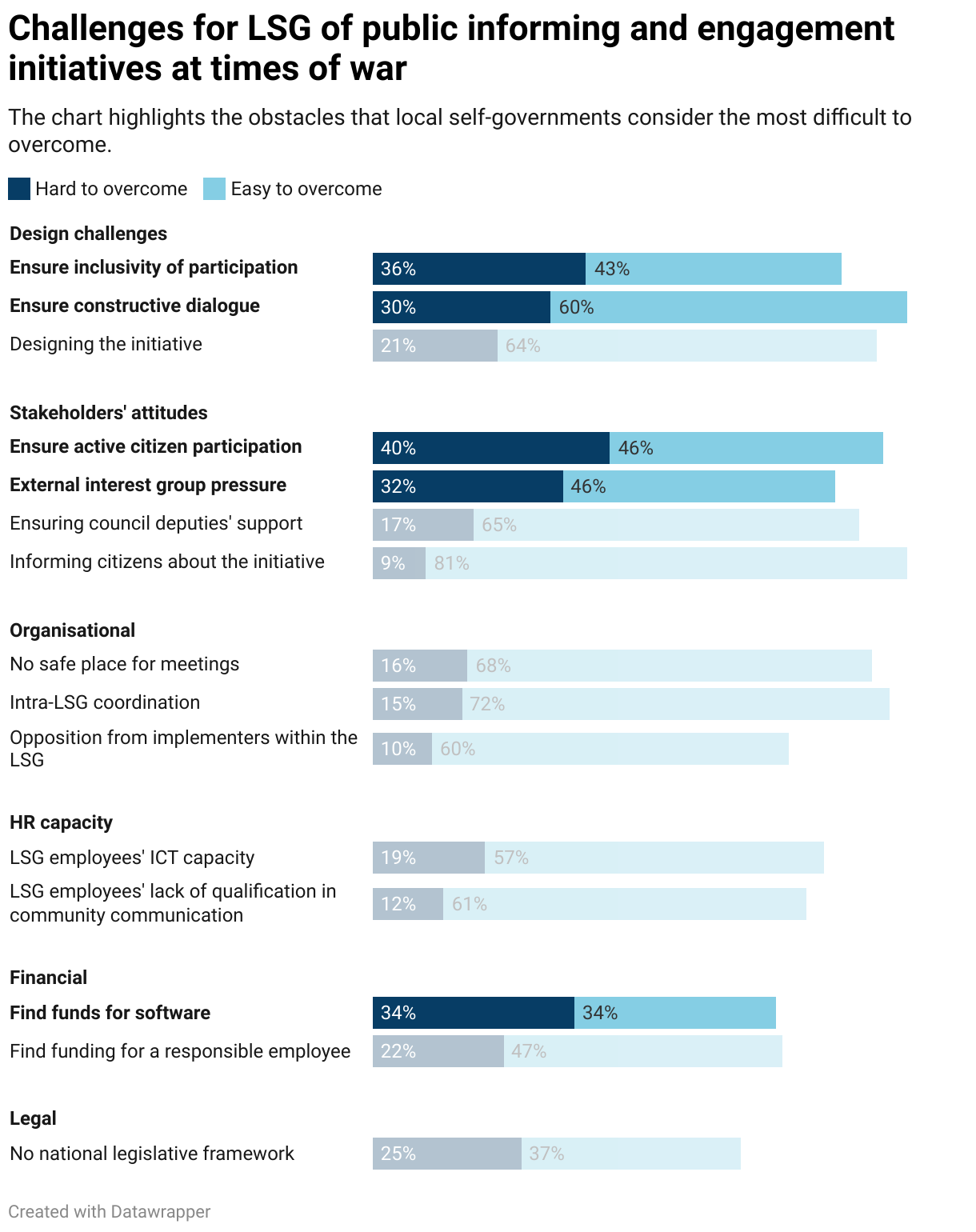
Source: Authors’ own survey
Note: N = 129 (LSG with any initiatives to inform and/or engage citizens or businesses in the past 12 months). Question: In the initiative mentioned above, to inform or engage citizens that you have implemented, what challenges did you have to overcome during the implementation process? Options: hard to overcome; easy to overcome; the challenge was not overcome; not relevant.The figure shows “hard to overcome” and “easy to overcome” responses. Challenges that were ‘hard to overcome’ for 30% and more respondents are highlighted.
Methods
This analysis draws on original survey data[4] from 181 local governments collected between January and March 2024, complemented by interviews, focus groups, and a validation workshop with public officials and civil society actors. The survey was conducted as an online questionnaire, distributed via nation-wide local government associations and NGOs. We received one response per municipality; if more than one official replied, we used the response from the highest-ranking respondent. Respondents were mainly mayors and deputy mayors, with heads of local government units as the next largest group. About 14% of Ukrainian municipalities in government-controlled areas participated in the survey.
To analyze changes over time, we compare results with three earlier studies conducted in 2021[5], 2022[6], and 2023[7]. These previous studies included questions on preparedness, vertical coordination, public engagement, and digital communication, many of which were repeated, sometimes in a slightly different form, in 2024.
Figure 2. LSGs surveyed by region
Source: Authors’ own survey. Note: This study faces a sampling constraint: Zaporizhzhia oblast is over-represented because we could not survey de-occupied or frontline hromadas in Kherson, Luhansk, and Donetsk. To reach those areas, we partnered with the NGO People in Need, whose activities were then concentrated in Zaporizhzhia. This NGO helped us distribute survey to the leaders of de-occupied hromadas and those near frontlines. The collaboration helped us manage survey fatigue and counter the low priority that frontline hromadas understandably give to research amid daily challenges
Collaborative Crisis Response: Community Members as Partners
Legitimacy Pursuit Through Public Engagement
Rather than retreat from the public, many Ukrainian local governments have actively involved community members in wartime crisis response. These efforts go beyond basic service provision and reflect a broader strategy of coproduction where authorities and societal actors jointly shape crisis responses. Under martial law, when elections are suspended, this engagement serves as an alternative source of democratic legitimacy.
Survey data from 2024 show that 71% of LSGs reported informing and/or engaging residents or businesses in the past year. This share remained stable even in areas experiencing active hostilities (69%) or those that were liberated (64%). At the same time, more local governments reported involving stakeholders directly in problem-solving (76%, 2.2 percentage points more than in 2022) and including diverse opinions (78%, 13 percentage points more than in 2022) (Figure 3). These trends suggest that deliberate civic participation is increasingly used as a tool for democratic resilience, functioning as an alternative pillar of legitimacy and accountability in the absence of elections.
Figure 3. The purpose of wartime public information and engagement initiatives by LSGs in 2024 compared to 2022
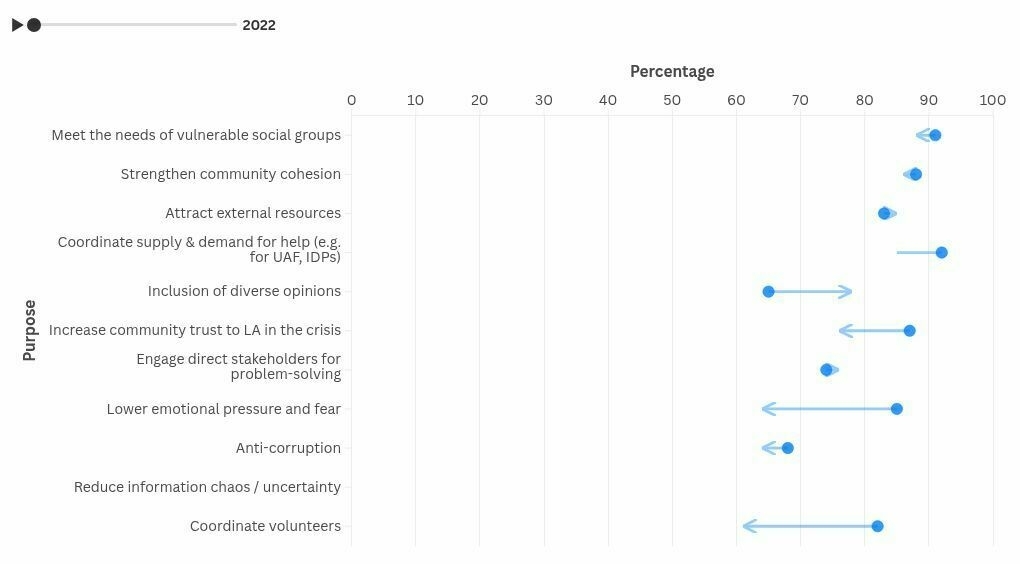
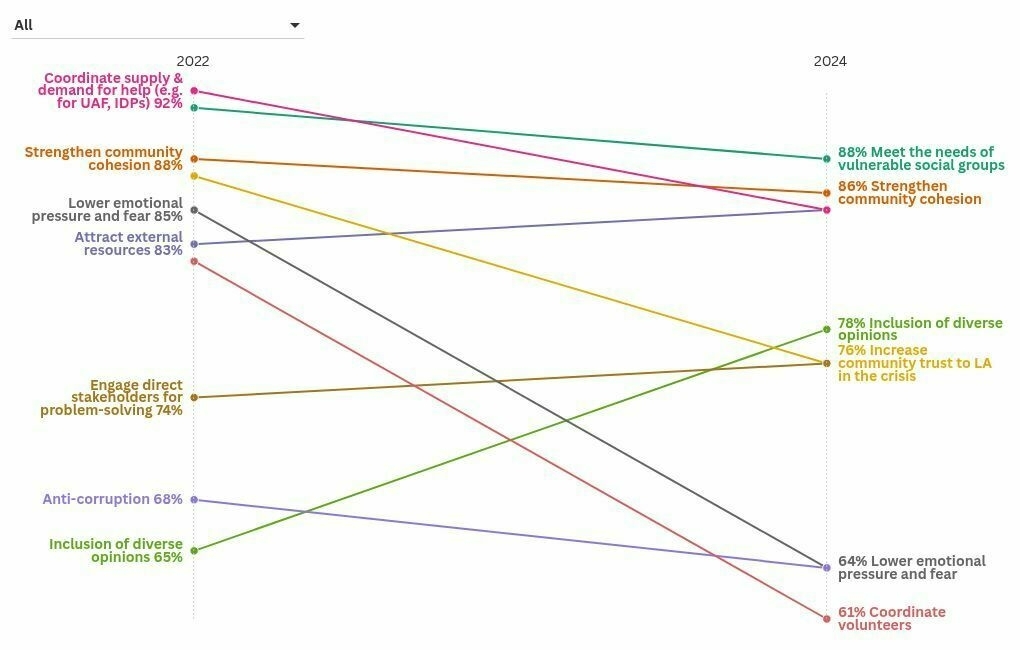
Source: Authors’ own survey. Note: N 2024 = 129, N 2022 = 160 (for LSGs that have initiatives to inform and/or engage citizens or businesses); the question was: “For what purpose did the LSG in your community introduce initiatives to inform and/or engage citizens or businesses in the last 12 months?” Respondents indicated primary and secondary purposes, as well as those that were irrelevant. The figures show only primary purposes.
One striking example comes from Makariv in Kyiv Oblast, a village that was massively damaged in the early days of the full-scale war. Rather than centralize postwar planning, the local government involved the whole community—including political opposition figures—in urban development workshops. Over time, these deliberations led to the formation of a “community development council“. This is an informal group which includes opposition parties and local government council members. At the council meetings they, with the assistance of NGOs, discuss projects in hromada such as creation of a Veterans’ hub.
Another form of collaboration emerged around the integration of internally displaced persons (IDPs). Over 750 local and regional governments have established IDP councils—advisory bodies that include both officials and displaced residents or their representatives. They serve as a communication channel between local authorities and displaced residents, helping to identify needs, share available support options, and coordinate responses. They represent a form of protected consultation—a meaningful participatory practice within the limits imposed by war.
Coproduction of Solutions to War-Related Problems
Local governments have increasingly adopted coproduction during the war—not just consulting civic actors but collaborating with them in designing and implementing responses.
This engagement was primarily motivated by practical needs: to build up community resources (85%), meet the needs of vulnerable social groups (88%), and coordinate the supply and demand for aid, including assistance for internally displaced persons (IDPs) and the Ukrainian military (85%) (Figure 3). Compared to 2022, there was a marked increase in efforts to include diverse opinions (+13 percentage points), while activities related to mitigating emotional pressure and fear (–21 pp) and coordinating volunteers (–20 pp) declined. This shift reflects a move toward more structured and targeted forms of collaboration focused on delivering immediate assistance.
The most common area for engagement was the integration of internally displaced persons (IDPs), with 34% of LSGs identifying it as the most critical issue addressed jointly with stakeholders. Other areas included civilian defense and security (21%) and provision of basic necessities (17%). In nearly all cases, LSGs informed at least one stakeholder group when addressing a critical issue. At the same time, only about a fifth of all respondents reported no engagement across the other three dimensions of participation—consultation, dialogue, and partnership—suggesting that collaboration is a widespread mode of crisis response.
The findings expose a latent governance informing deficit: roughly one-quarter of hromadas (25%) did not inform citizens about the latest critical issue in hromada. Addressing this communication shortfall could catalyze higher levels of institutional trust and unlock additional local resources essential for tackling critical problems within these communities.
Figure 4. Extent of stakeholder engagement in response to critical war-related local problems
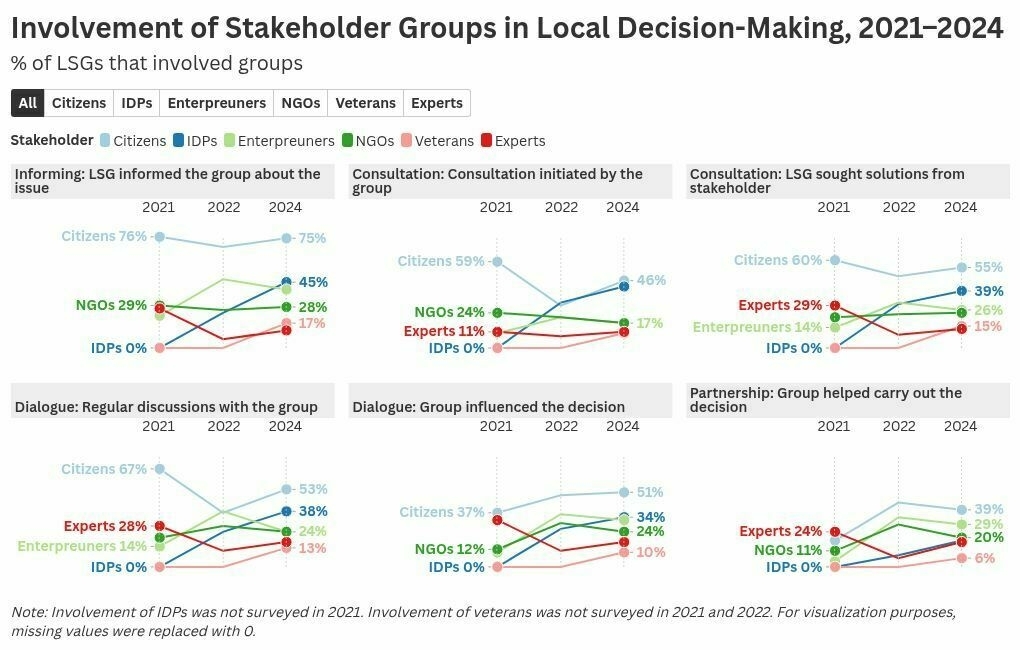
Source: Authors’ own survey. Note: N = 127 (LSGs outside of combat areas, LSGs in combat areas, and liberated LSGs that engaged the public and/or business on critical issues over the last 12 months); the question was: “Regarding the problem you identified in the previous question, which stakeholders were involved, and how did they participate in solving the problem?”
Particularly since 2022, collaboration with IDPs has expanded (Figure 4). LSGs have proactively shared information and regularly consulted IDP groups, often with support from NGOs acting as facilitators. These intermediaries help communicate needs and guide local authorities in adjusting programs. Although responsiveness to stakeholder input varies, the increased reliance on this form of engagement reflects a growing appreciation for grassroots knowledge in problem-solving.
NGOs and businesses also play crucial roles in collaborative crisis governance. NGOs have helped create inclusive infrastructure, such as community centers and bomb shelters. A notable example of institutional cooperation between local government and business is the UNBROKEN rehabilitation initiative in Lviv. It is jointly managed by the Lviv IT Cluster, the Ukrainian Catholic University, and the city government. Together, they coordinate activities and fundraising, ensuring transparency and shared responsibility.
Finally, 10–15 percent of LSGs indicate that they inform or consult former soldiers about issues beyond veteran policy. For example, Makariv specifically contacted the local veteran society during reconstruction discussions. This reflects how LSGs are sensitive to the composition of their communities and understand the significance of veteran inclusion for social cohesion.
Public Engagement Supports Crisis Preparedness
We tracked hromada preparedness at three moments of the full-scale war—February 2022, October 2022 and March 2024—using a 0-to-1 index (where 0 = absolutely not prepared and 1 = fully prepared; see Appendix for details). In the first days of Russia’s full-scale invasion, almost 80% of local self-governments fell into the “low” red zone (score < 0.25; Figure 5), i.e. they were completely unprepared to deal with the invasion. Eight months later, this group had nearly disappeared, replaced by a surge in hromadas with moderate (0.25-0.75) and high (> 0.75) readiness. By March 2024, roughly 70% of hromadas clustered in the moderate band, while the share of the highly prepared group declined to about one-third, signalling a plateau.
Figure 5 illustrates this dynamic: the red curve collapses (low preparedness), the orange curve (moderate) rises steadily, and the green curve (high) forms a “hill”—a sharp climb through 2022 followed by partial retreat in 2024. In simple terms, communities rapidly closed the most critical gaps, but are now settling into a sustainable, although still incomplete, level of readiness.
Figure 5. Distribution of hromadas by Preparedness Index. Comparison February 2022, October 2022, and March 2024
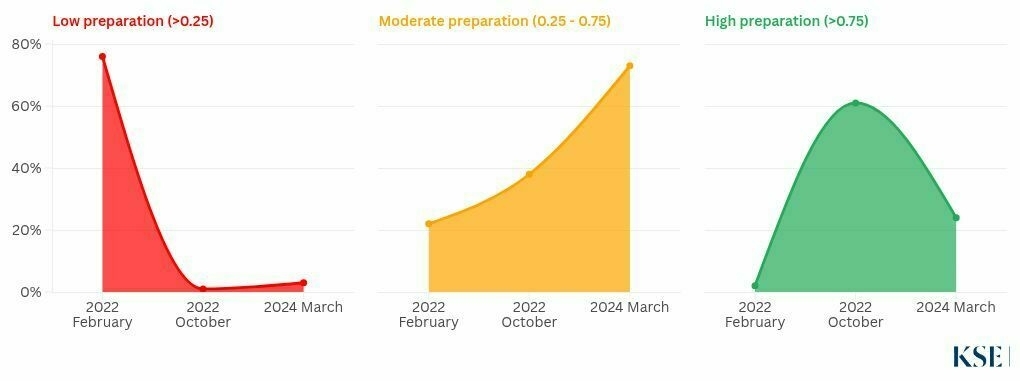
Source: authors’ calculations
Note: In February and October 2022 data come from the survey within the framework of the Project “Support to the Decentralisation Reform in Ukraine” (U-LEAD with Europe): N = 131 (all LSGs except those that are temporarily occupied). March 2024 data come from ICLD survey: N = 156 (LSGs outside combat areas, on the territory of hostilities and liberated LSGs). Information on February 2022 was retrospectively asked in October 2022.
Disaggregating the data adds a nuance. Urban and densely populated hromadas are significantly better equipped than rural and smaller counterparts. This underscores how resource availability and institutional capacity influence crisis resilience.
Furthermore, our regression analysis shows that local governments engaging a broader range of stakeholders are better prepared to manage wartime crises (Figure 6). Our preparedness index measures key components of crisis capacity: emergency action planning, readiness to address critical resource shortages (e.g., food, water, medicine), and the ability to restore vital infrastructure. Even when controlling for contextual factors, higher levels of stakeholder involvement are associated with higher preparedness scores.
The likely mechanism behind this relationship is that non-governmental actors help local authorities mobilize resources and co-develop crisis response strategies. This makes engagement not just a democratic practice, but a functional tool of resilience governance.
Figure 6. Standardized regression estimates of nongovernmental stakeholder impact on crisis preparedness
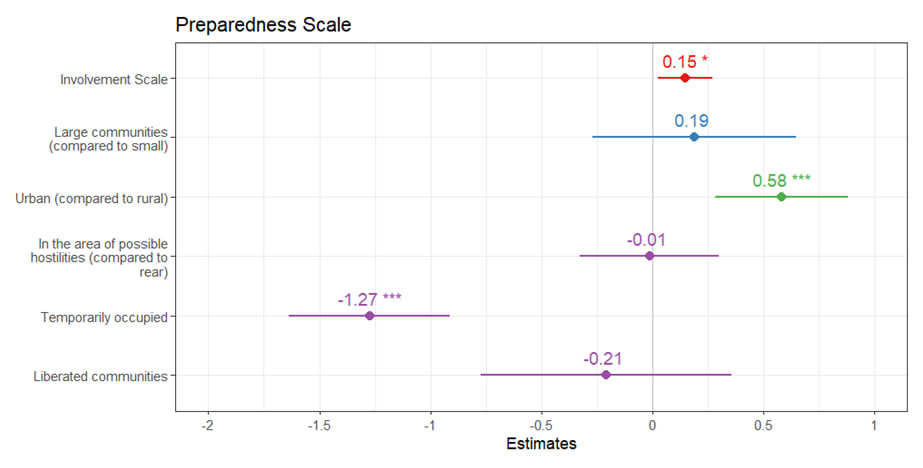
Source: Authors’ calculations. Note. The Involvement Index has a positive and statistically significant effect on preparedness (β = 0.149, p = 0.016). For example, a 10-point increase in involvement (on a 0–35 scale) is associated with a 0.22-point rise in preparedness (on a 0–1 scale), implying that highly engaged hromadas are over 20 percent more prepared than those with minimal stakeholder engagement. The model explains 35.6 percent of the variance (R² = 0.356, n = 181). Control variables include hromada size, hromada type, and security conditions.
Yet, not all local governments make full use of this approach. Only about one-third of those surveyed said they involve NGOs and businesses in planning their crisis response. Since this kind of collaboration helps improve preparedness, it remains a missed opportunity for many hromadas. Increasing civic engagement—especially with support from international donors and national programs—can help strengthen local crisis response in the long term.
Our findings also point to a second important factor: the availability of community spaces. Our data show a positive correlation between the number of physical or discursive spaces in a hromada and the extent of stakeholder involvement (Figure 7). In short, the more accessible public spaces in hromada are, the more likely it is to involve diverse actors in crisis response.
This finding supports our earlier results. It shows a positive link between the availability of physical and virtual community spaces in a hromada and its ability to prepare for wartime challenges. These spaces help local governments and communities work together more effectively. The most common examples in our sample are humanitarian aid hubs, IDP councils, and youth centers. Other spaces include IDP support centers, volunteer hubs, meeting places for civic groups, adult education centers, and business support centers.
Figure 7. Availability of community spaces and stakeholder engagement in war-related problem-solving
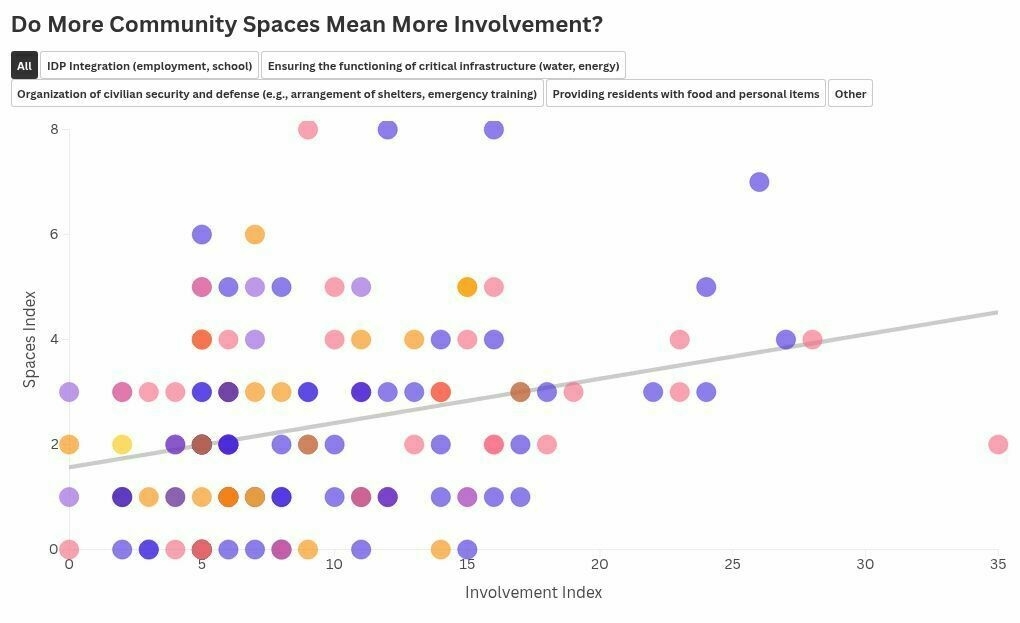
Source: Authors’ calculations. Note: The figure shows a scatter plot of the Spaces Index against the Involvement Index with category-wise trend lines (IDP integration—Spearman’s rho = 0.40 [p = <0.01]; other—Spearman’s rho = 0.23 [p = <0.05]); N = 127 (LSGs outside of combat areas, LSGs in combat areas, and liberated LSGs that engaged the public and/or business on critical issues over the last 12 months); the Involvement Index reflects the diversity of involved stakeholders in the multiplicity of participatory dimensions, while the Spaces Index demonstrates the number of community spaces reported by LSG respondents.
Conclusions and Recommendations
The Ukrainian case shows that collaborative crisis governance is both possible and effective under wartime conditions. Despite martial law, institutional disruptions, and active hostilities, many local governments have engaged civic actors—NGOs, IDPs, businesses, and veterans—not only as aid recipients but as co-producers of crisis response. This engagement has supported societal resilience by improving emergency planning, resource coordination, and local legitimacy.
To build on these strengths, three recommendations emerge:
- Treat local governments as strategic partners in national crisis management. Hromadas can provide local, context-specific solutions. To support this, Ukraine should develop formal feedback mechanisms and multi-level coordination platforms linking LSGs with oblast and central authorities.
- Make civic engagement crisis-ready. Invest in joint emergency preparedness exercises involving local officials, civic leaders, NGOs, and businesses before the next shock hits. It also requires decentralized resource stockpiling, where local actors help identify, store, and manage emergency supplies.
- Enable participation through investment in civic infrastructure. This includes safe and accessible community spaces such as bomb shelters and inclusive public centers, support for trained facilitators to guide multi-level dialogue, and outreach through new communicators—like youth groups and local NGOs—especially where local governments are overstretched.
Appendix
The Preparedness Scale is a composite measure assessing LSG crisis readiness. It includes 26 items covering resource stockpiles, crisis communication, backup infrastructure, response planning, and data security. The scale’s reliability was assessed using Cronbach’s alpha (α = 0.84), ensuring internal consistency. To facilitate interpretation, the index was normalized from 0 to 1, where higher values indicate greater preparedness.
The Involvement Scale measures stakeholder engagement in local crisis management based on the Council of Europe’s participation dimensions. It includes 35 items (α = 0.87), capturing informing, proactive, and reactive consultation, regular exchange and feedback to stakeholder input (dialogue) across the following stakeholder groups: residents, businesspeople, NGOs, IDPs, veterans, and experts. The scale is an additive index summing all stakeholder interactions, normalized to enhance comparability.
For further reading, see Keudel, O., Hatsko, V., Darkovich, A., & Huss, O. (2024). Local Democracy and Resilience in Ukraine: Learning from Communities’ Crisis Response in War (Research Report No. 33; p. 57). Swedish International Centre for Local Democracy.
[1] Valentyn Hatsko is a data analyst at the Kyiv School of Economics and a PhD candidate in sociology at Taras Shevchenko National University of Kyiv.
[2] Andrii Darkovich is a researcher and local governance expert at the Center for Sociological Research, Decentralization, and Regional Development at the Kyiv School of Economics Institute. He is pursuing a PhD in political science at the Kyiv School of Economics.
[3] Oleksandra Keudel is an associate professor at the Kyiv School of Economics. She studies democratic transformation and societal resilience in hybrid regimes, specializing in Ukraine’s subnational politics.
[4] Valentyn Hatsko, Antonii Karakai, Andrii Darkovich, Oksana Huss, Oleksandra Keudel (2024). Local Governance in Ukraine during the full-scale Russian invasion. Merged data from online surveys of local self-government authorities
[5] Congress of Local and Regional Authorities. (2023a). Baseline survey on Open Government at local level in Ukraine: Mapping initiatives and assessing needs. Council of Europe. https://rm.coe.int/open-government-surveyeng/1680a97942
[6] Congress of Local and Regional Authorities. (2023b). Survey on the needs and priorities of local authorities of Ukraine. The provision of services in times of war and post-war recovery. Council of Europe. https://rm.coe.int/1680a9f1fe
[7] Rabinovych, M., Brik, T., Darkovich, A., Savisko, M., Hatsko, V., Tytiuk, S., & Piddubnyi, I. (2023). Explaining Ukraine’s resilience to Russia’s invasion: The role of local governance. Governance, 1(20). https://doi.org/10.1111/gove.12827
Photo: depositphotos.com/ua
-
General Staff: Russia has lost 1,020,980 troops in Ukraine since Feb. 24, 2022
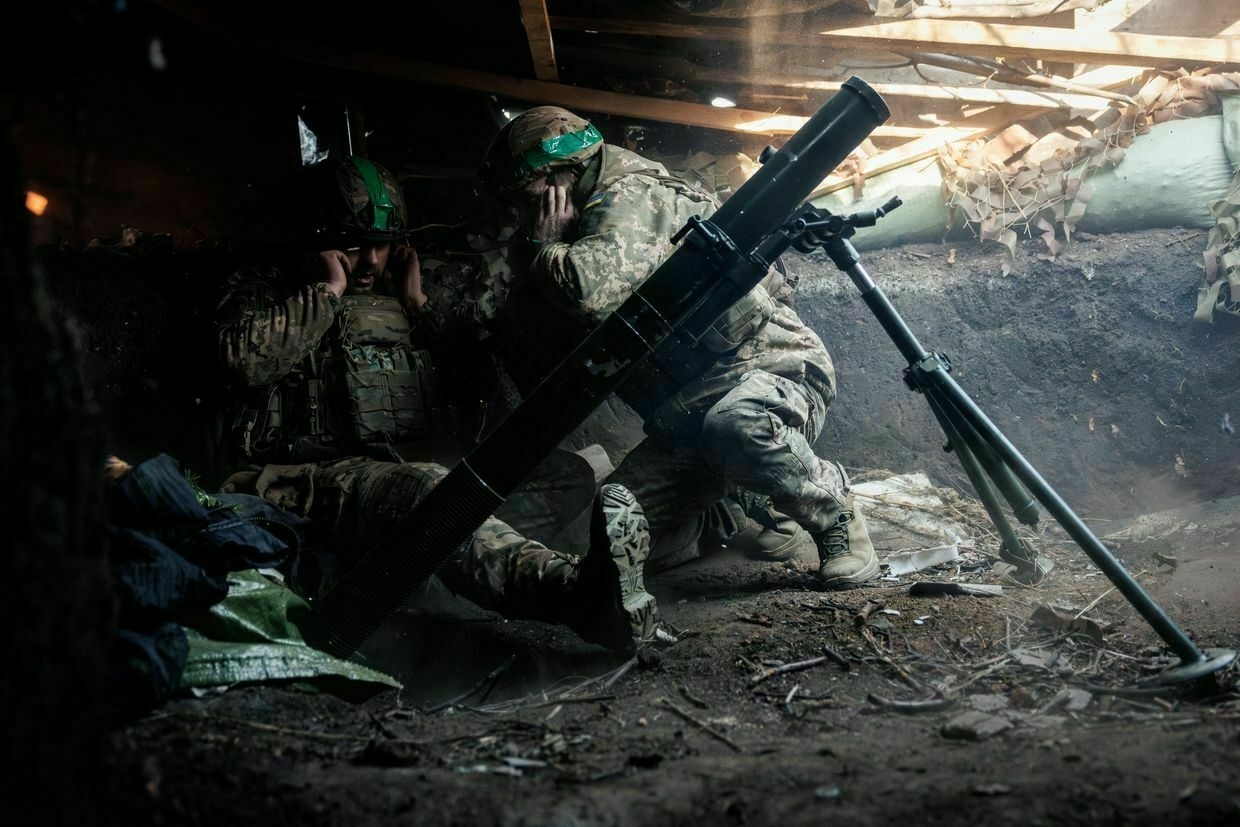
Russia has lost 1,020,980 troops in Ukraine since the beginning of its full-scale invasion on Feb. 24, 2022, the General Staff of Ukraine’s Armed Forces reported on July 1.
The number includes 970 casualties that Russian forces suffered just over the past day.
According to the report, Russia has also lost 10,983 tanks, 22,928 armored fighting vehicles, 53,696 vehicles and fuel tanks, 29,754 artillery systems, 1,427 multiple launch rocket systems, 1,190 air defense systems, 420 airplanes, 340 helicopters, 42,940 drones, 3,436 cruise missiles, 28 ships and boats, and one submarine.
Warfare in Ukraine has changed… againThe Kyiv Independent’s Francis Farrell explains a new modification of the standard first-person view (FPV) drone that already once transformed the way war is fought. Fiber optic cable now used to connect drone operators to FPVs ensures a perfect image and control experience all the way to the target — and cannot be spotted by enemy drone detectors.The Kyiv IndependentFrancis Farrell

-
Zelensky, German FM discuss supplying IRIS-T air defenses, joint weapons production, strengthening Russia sanctions
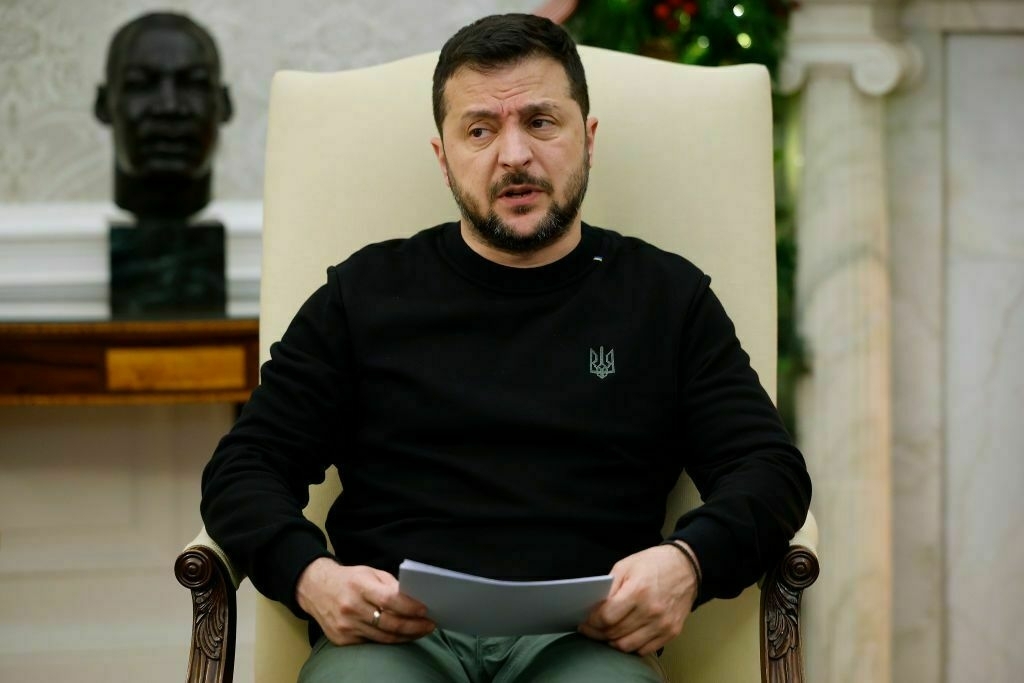
President Volodymyr Zelensky and German Foreign Minister Johann Wadephul met in Kyiv on June 30, where the two leaders discussed Germany supplying additional IRIS-T air defense systems, joint weapons production, and strengthening sanctions against Russia, Zelensky said.
Wadephul earlier said Germany is working with its defense industry, European allies, and the U.S. to secure more air defense systems for Ukraine.
“We are going down every path available… The German defense industry is trying to expand its capacity. We’re speaking with our European partners, and I believe we must also move forward with the United States,” he said.
Zelensky met with executives of German defense companies alongside Wadephul during the visit to Ukraine’s capital.
“We discussed sanctions pressure on Russia, the potential for supplying new IRIS-T systems, and joint weapons production — both in Ukraine and in Germany,” Zelensky said in a post to social media.
Zelensky noted Germany signalled it believes that Ukraine’s future is in NATO amid Russia’s war against Ukraine.
“We will continue to develop relevant military hubs and increase the presence of German companies in Ukraine. We had an in-depth discussion on interceptor drones. I am grateful for the willingness to help,” Zelensky said.
Earlier in the visit, Wadephul noted that he remains in close contact with German Defense Minister Boris Pistorius to assess whether existing systems from Germany’s own stockpiles can be redirected to Ukraine.
Loss of Ukraine lithium deposit to Russia won’t impact minerals deal, says investorRussian troops have taken over the site of one of Ukraine’s most valuable lithium deposits near the village of Shevchenko, Donetsk Oblast, as Russia ramps up its summer offensive. While Ukrainian troops control territories near the site, the deposit is now under Russian occupation, Roman Pohorilyi, founder of open-sourceThe Kyiv IndependentDominic Culverwell
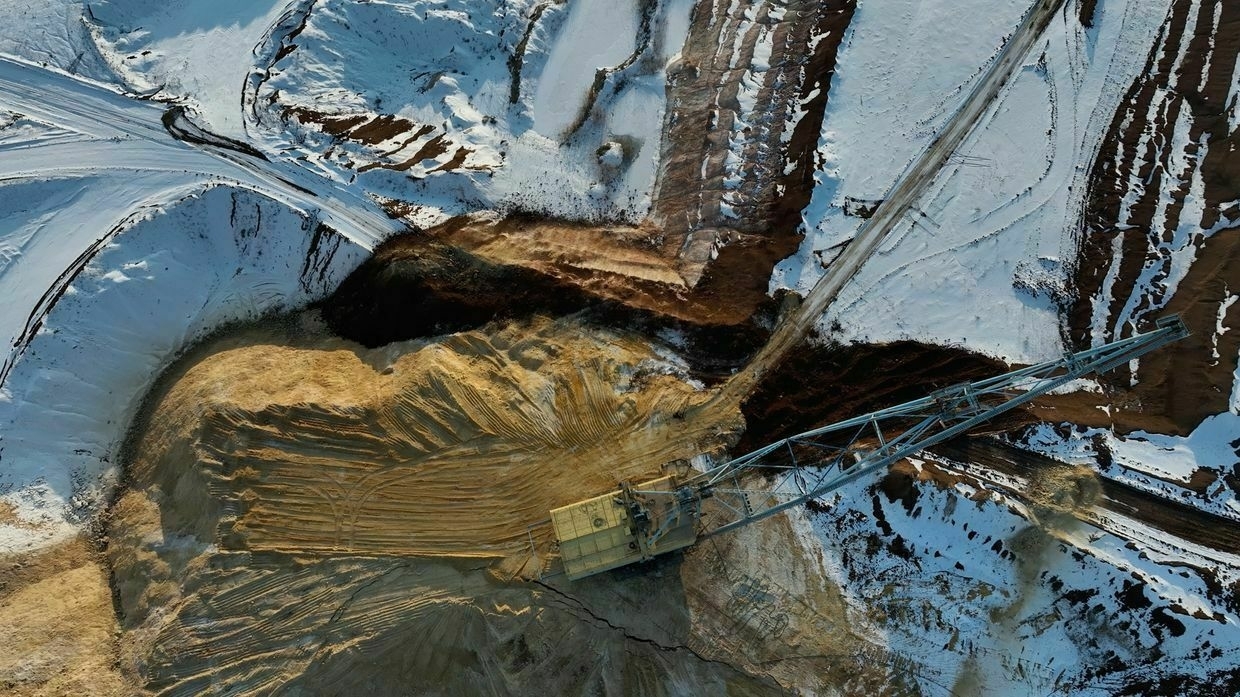
-
UN analysis finds Russia responsible for 2022 Olenivka prison explosion killing Ukrainian POWs, ombudsman says
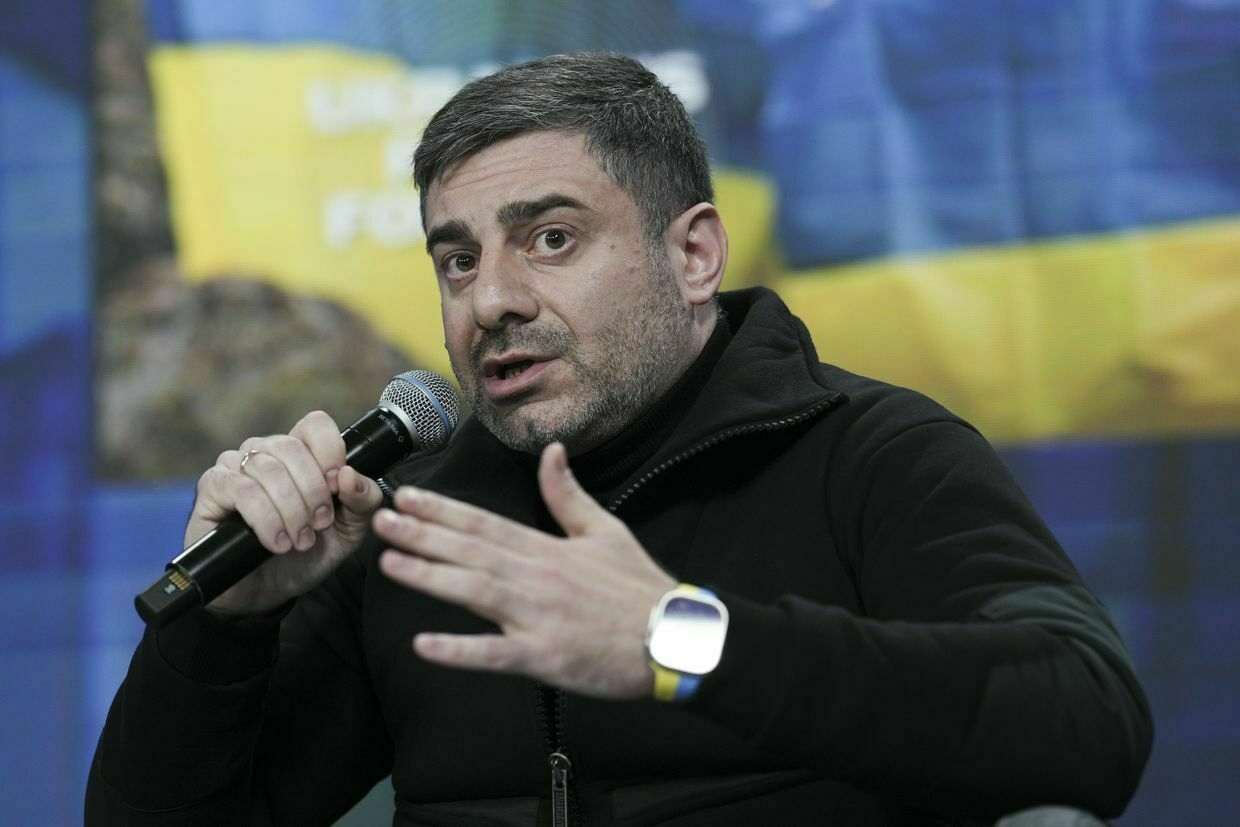
A United Nations (UN) internal analysis has found Russia responsible for a 2022 explosion at Olenivka prison, which killed over 50 Ukrainian prisoners of war (POWs), Ombudsman Dmytro Lubinets said on June 30.
"(A)n internal analysis of the UN showed that it was the Russian Federation that planned and carried out the attack," he said in a post to social media.
Russia has denied responsibility, prevented efforts by the international community to independently investigate the attack, and contaminated evidence at the site, according to a report published by the UN.
Kyiv has said that days before the July 2022 attack, Russia deliberately put Ukrainian members of the Azov Regiment, who were awaiting a prisoner exchange, in a separate part of the Olenivka prison building that was later destroyed in the explosion.
“The report identifies the weapons and ammunition that the Russian Armed Forces used to kill Ukrainian prisoners of war, and also examines in detail the planning, organization, and execution of the murder,” Lubinets said.
The ombudsman noted that the UN fact-finding mission on Olenivka was disbanded due to a lack of security guarantees, adding that the mission has previously refused to review evidence provided by Ukraine.
Russia has repeatedly violated international conventions protecting the rights of POWs as it continues to carry out its war against Ukraine.
A Russian military court has convicted 184 Ukrainian POWs captured in Kursk Oblast of acts of terrorism, Mediazona reported on June 25.
The POWs captured in Kursk were charged with carrying out a grave terrorist act by a group of individuals, as outlined by the Russian Criminal Code.
Junior Lieutenant Yevhen Hoch was convicted of allegedly carrying out an act of terrorism by taking part in Ukraine’s Kursk Oblast incursion.
Smashing previous monthly record, Russia launches 5,337 kamikaze drones against Ukraine during JuneRussia launched a record 5,337 Shahed-type drones against Ukraine in June, according to data from the Ukrainian Air Force and Dragon Capital, smashing the previous record of 4,198 set in March. Russia’s bombardments, a fact of life after three years of full-scale war, have intensified dramatically in MayThe Kyiv IndependentYuliia Taradiuk
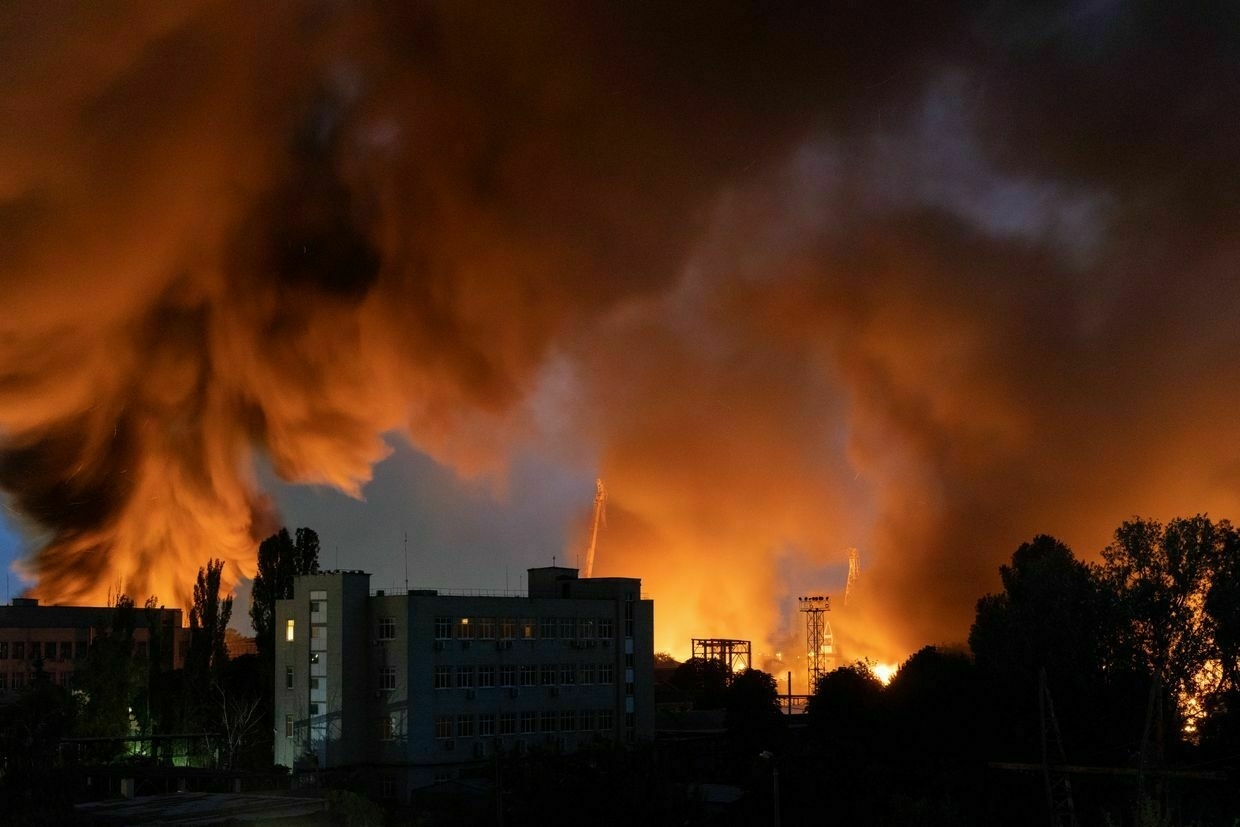
-
Russian logistics hub burning in occupied Luhansk Oblast amid reported drone attack, explosions
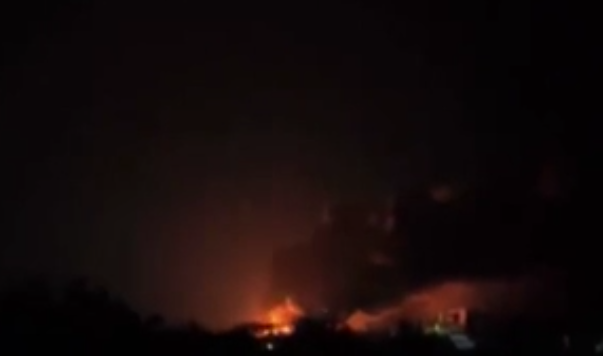
Editor’s note: This is a developing story and is being updated.
A Russian logistics hub in occupied Luhansk Oblast is on fire amid a reported drone attack overnight on July 1.
“Russian logistics in temporarily occupied Luhansk are burning,” head of the center for disinformation Andriy Kovalenko said.
The drone attack was reported by local media, publishing what appear to be videos of the burning logistics hub and the sound of drones.
Russian state media reported that over 20 drones were flying over Luhansk Oblast, citing Russian proxies in the region.

Ukraine’s Luhansk Oblast (Nizar al-Rifai/The Kyiv Independent) Ukraine’s military regularly strikes military targets in Russian-occupied territories and deep within Russia in an attempt to diminish Moscow’s fighting power as it continues its war against Ukraine.
Ukraine’s military intelligence (HUR) destroyed three Russian air defense systems using drones in the occupied Zaporizhzhia Oblast on June 14.
“Strike drone masters of the Department of Active Operations of the HUR of the Ukrainian defense ministry discovered and destroyed expensive air defense systems of the Russian invaders in the temporarily occupied territory of the Zaporizhzhia region,” HUR reported in a post to Telegram.
A Russian Buk-M3, a Pantsyr S1, and a 9S19 Imbir radar from the S-300V air defense system were destroyed in the Ukrainian drone attack.
Ukraine war latest: Ukrainian forces push Russian army away from SumyKey developments on June 30: * Ukrainian forces push Russian army away from Sumy, General Staff says * Ukrainian military again denies reports on Russian troops entering Dnipropetrovsk Oblast * After months of stalling, Russia blames Ukraine, US for slow pace of peace talks * Germany vows to pursue ‘every path’ to boost Ukraine’sThe Kyiv IndependentThe Kyiv Independent news desk

-
Ukraine launches missile attack against Crimea, Donetsk and Rostov
Ukraine has reportedly launched a missile attack on Crimea and Donetsk, with several missiles reportedly heading towards Novoshakhtinsk in Russia's Rostov region. A missile strike threat has been declared near Akhtubinsk, close to the Kapustin Yar military base.
Russian Telegram channel "Incident Sevastopol" reports that approximately nine Ukrainian fighter jets launched cruise missiles. Footage of the launches has been captured in the Kherson region. The Russian channel 13 TACTICAL noted that multiple missiles flew towards Dzhankoy, Novoshakhtinsk, and even German Taurus missiles towards Rostov.
Germany had planned to supply Taurus missiles to the Ukrainian Armed Forces. Sevastopol’s military units have sounded alarms, and an explosion has been reported in the Krasnoperekopsky district.
Vehicle traffic on the Kerch Bridge has been halted, according to the monitoring channel "Crimean Wind." In Novoaleksiivka, Kherson region, near the peninsula border, a missile was reportedly heard flying overhead at 21:40. Russian Telegram channels report British Storm Shadow missile sightings over northern Crimea and towards Russia's Rostov region.
Russian military channels reported explosions in Donetsk and Yasynuvata. Eyewitnesses in the city center reported seeing smoke.
Preliminary reports suggest Ukrainian Air Forces targeted a metallurgical plant in Donetsk and a railway station in Yasynuvata. It was later reported that the headquarters of the 8th Combined Arms Army of Russia, located in Donetsk’s central department store, was hit. The Ukrainian Command has not commented on the missile strikes on occupied Donbas and Crimea.
A missile alert has also been issued in Akhtubinsk, Astrakhan region. The city's mayor, Alexander Sivakov, urged residents to stay indoors, avoid large crowds, and monitor official information closely. Akhtubinsk houses an airport of the same name. The nearby Kapustin Yar missile range in the Astrakhan region was previously used by Russia to launch medium-range ballistic missiles known as "Oreshnik."
The distance from the frontlines to Akhtubinsk and the range is over 600 kilometers. As of late May, reports estimated that the Ukrainian Armed Forces could have around 40 sets of ATACMS missiles remaining. The UK and Germany are working on producing new weapons capable of long-range and precision strikes, with a target range exceeding 2,000 kilometers.
-
UN report reveals Russia's premeditated attack on Olenivka prison, debunking Ukrainian HIMARS claims
In a stunning revelation, a United Nations expert group has issued a report based on an internal analysis concluding that Russia orchestrated and executed the attack on Olenivka prison. This damning finding identifies the Kremlin's deliberate targeting of Olenivka Correctional Colony No. 120 in Volnovakha on the night of July 28 to 29, 2022. The atrocity left more than 50 Ukrainian prisoners of war dead and around 130 injured, reported Ukrainian Ombudsman Dmytro Lubinets on his Telegram channel.
Following the explosion, Russia hastily blamed Ukraine, alleging a supposed "HIMARS missile attack." While the International Committee of the Red Cross and the UN expressed a willingness to investigate the horrifying incident, the UN's Olenivka fact-finding mission was dissolved five months later, citing insufficient safety assurances.
"Despite repeated attempts to meet with UN mission members to provide evidence held by Ukraine, they never agreed to review it. I even extended an invitation for a joint visit to the scene with the Russian human rights commissioner, but received a rejection," Lubinets lamented. It took a full year for the UN to debunk Russia’s falsehoods by stating the Olenivka attack "was not caused by a HIMARS rocket!" Nevertheless, Lubinets noted, the UN has yet to publicly accuse Russia of terrorism, even with evidence in hand.
"Recently, however, a UN expert group independently published a detailed report with evidence - an internal UN analysis that identified Russia as the planner and perpetrator of the attack. The report specifies the weapons and ammunition deployed by Russian armed forces to execute the massacre of Ukrainian prisoners of war and thoroughly examines the planning, organization, and execution of the killings. It also evaluates the investigations conducted by Russia, Ukraine, and the UN itself, offering forward-looking recommendations for Ukraine," Lubinets concluded.
On July 29, 2022, authorities of the so-called Donetsk People’s Republic reported that 47 people perished and 75 were injured, including eight guards, during the shelling of the penal colony.
Later, the Ukrainian General Staff reported that Russian armed forces carried out a targeted, premeditated artillery strike on the detention facility in Olenivka.
-
EU seals new trade deal with Ukraine, key details still pending
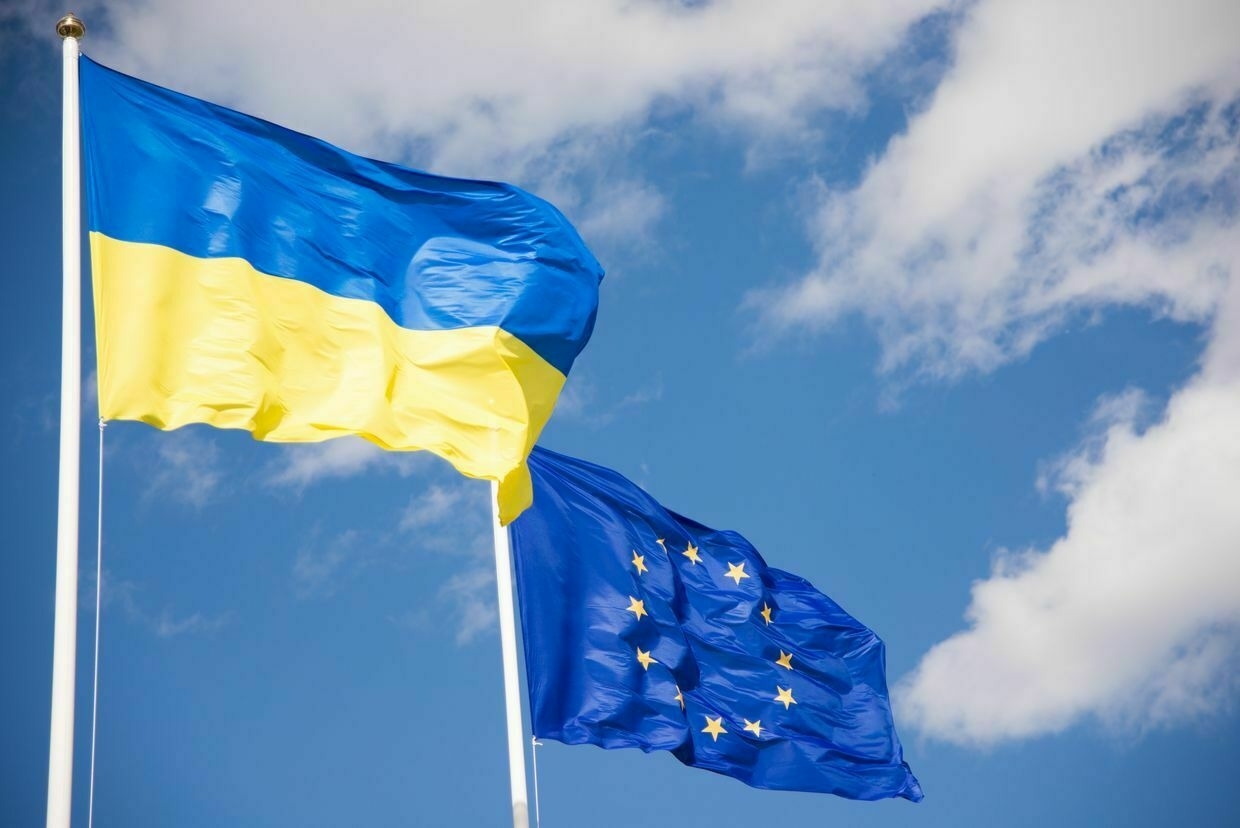
The European Union has reached a long-term trade agreement with Ukraine, marking the end of wartime trade liberalisation measures, though key details of the deal remain undisclosed.
EU Trade Commissioner Maros Sefcovic and Agriculture Commissioner Christophe Hansen announced the agreement on June 30, calling it a “predictable” and “reciprocal” framework. However, they did not reveal the final quotas or volumes included in the deal. Sefcovic noted that the finer points would be finalised “in the coming days.”
The new deal replaces the autonomous trade measures (ATMs) that allowed Ukrainian agri-food exports to enter the EU tariff-free since 2022. Those temporary measures expired on June 5, reinstating pre-war trade conditions for a brief period.
Structured in three tiers, the new framework introduces modest increases in quotas for products considered sensitive by EU member states, such as eggs, poultry, sugar, wheat, maize, and honey. A second group of products—including butter, skimmed milk powder, oats, barley, malt, and gluten—will see their quotas adjusted to reflect peak import levels reached since the start of the war. A third category, which includes items such as whole milk powder, fermented milk, mushrooms, and grape juice, will be fully liberalised.
Once finalised, the text of the agreement will be submitted to the Council for ratification.
Sefcovic said negotiations concluded over the weekend, less than a month after formal talks began. However, some critics claim the EU delayed the process to avoid backlash from farmers ahead of Poland’s presidential election.
The agreement also benefits EU producers, granting them greater access to the Ukrainian market for goods like pork, poultry, and sugar. But Hansen made it clear that expanded access for Ukrainian exports will depend on Ukraine’s compliance with EU agricultural standards by 2028, including rules on animal welfare and pesticide use. “This commitment also fits perfectly with Ukraine’s EU accession path,” he said.
The deal includes safeguard provisions, allowing the EU or individual member states to restrict imports if domestic markets face serious disruptions. “Both EU and Ukrainian producers deserve a stable and predictable basis for the future development of bilateral trade,” Hansen added.
Smashing previous monthly record, Russia launches 5,337 kamikaze drones against Ukraine during JuneRussia launched a record 5,337 Shahed-type drones against Ukraine in June, according to data from the Ukrainian Air Force and Dragon Capital, smashing the previous record of 4,198 set in March. Russia’s bombardments, a fact of life after three years of full-scale war, have intensified dramatically in MayThe Kyiv IndependentYuliia Taradiuk
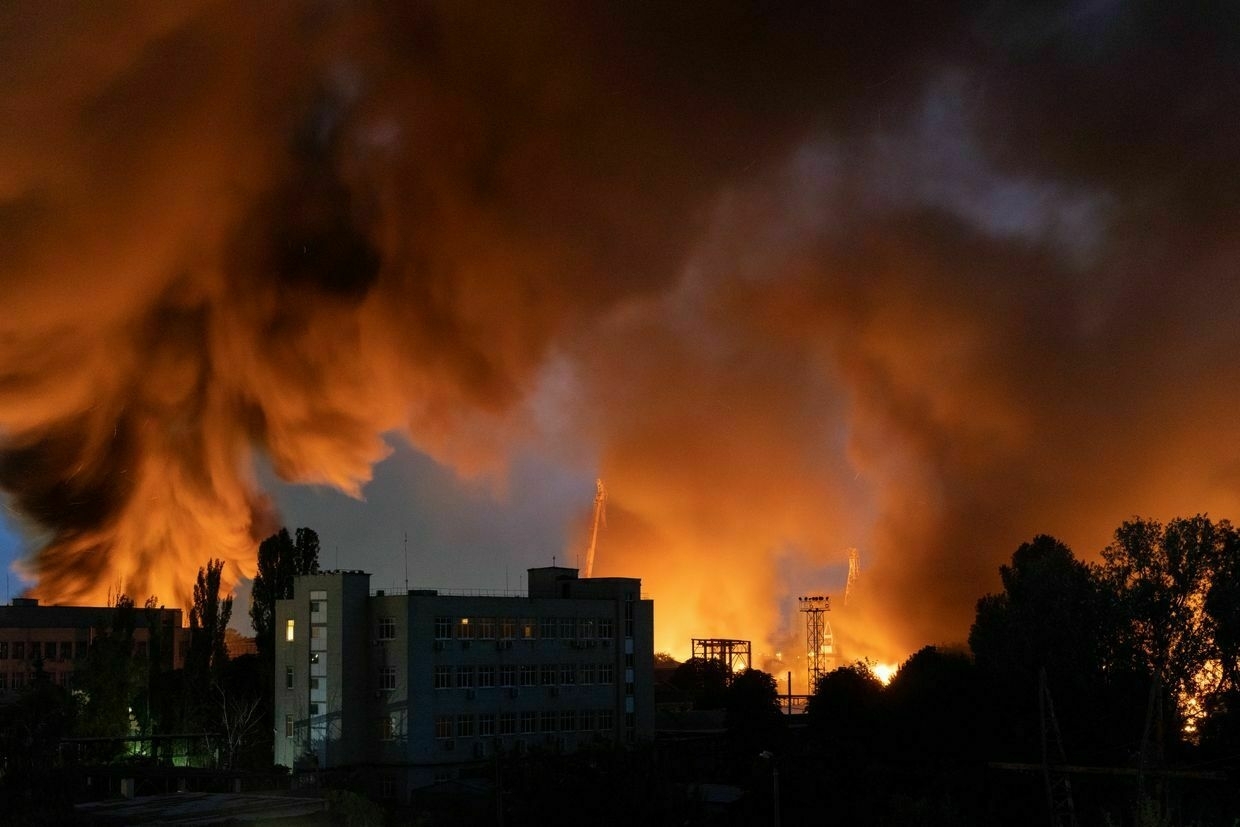
-
'Russia cannot continue to stall for time' while bombing Ukrainian civilians, Kellogg says
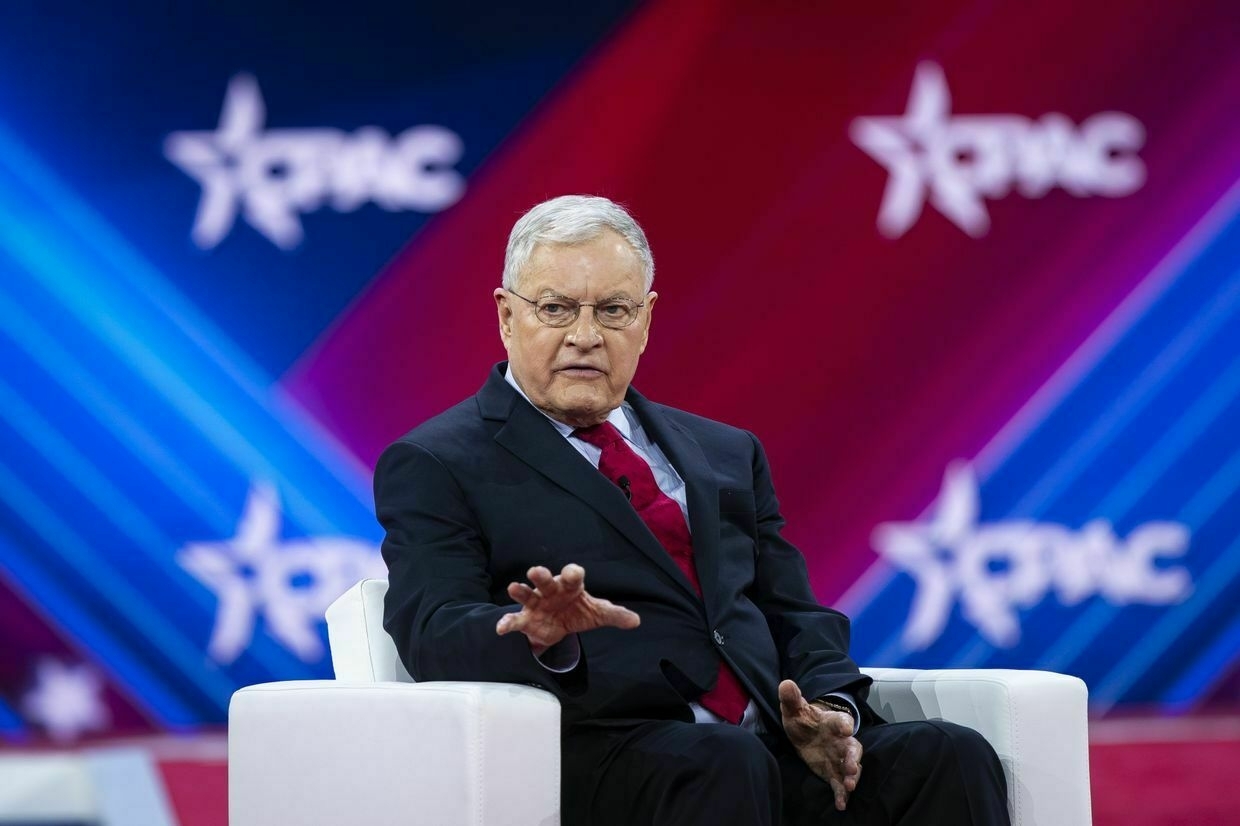
U.S. Special Representative Keith Kellogg has pushed back against Russian claims that Ukraine and the United States are responsible for delaying peace negotiations, arguing that it is Moscow that continues to obstruct efforts to end the war it initiated.
“Peskov’s recent comments on the state of negotiations are Orwellian. Russian claims that it is the US and Ukraine stalling peace talks are unfounded. President Trump has been consistent and adamant about making progress to end the war. We urge an immediate ceasefire and a move to trilateral talks to end the war. Russia cannot continue to stall for time while it bombs civilian targets in Ukraine,” Kellogg said on X.
Kremlin spokesperson Dmitry Peskov on June 29 accused Washington and Kyiv of holding up progress, stating that future developments in peace talks depend on Ukraine’s stance, the effectiveness of U.S. mediation, and the situation on the battlefield.
“A lot depends, naturally, on the position of the Kyiv regime,” Peskov said in a televised interview with Belarus 1 TV, according to Reuters. “It depends on how effectively Washington’s mediating efforts continue,” he added.
Despite those remarks, Russia has rejected a U.S.-backed ceasefire proposal and continued its attacks on Ukrainian cities launching record numbers of drones against Ukrainian cities. Earlier this month, Russian President Vladimir Putin openly stated that “all of Ukraine is ours,” raising further doubts about the Kremlin’s willingness to engage in meaningful negotiations.
Peskov’s interview aired as the war moves into its fourth summer with no comprehensive ceasefire in place. Although two rounds of peace talks between Russia and Ukraine took place in Istanbul this year—on May 16 and June 2—the discussions have not led to any breakthrough on ending hostilities.
While the Istanbul meetings led to notable prisoner exchanges, they produced no tangible progress toward peace.
Smashing previous monthly record, Russia launches 5,337 kamikaze drones against Ukraine during JuneRussia launched a record 5,337 Shahed-type drones against Ukraine in June, according to data from the Ukrainian Air Force and Dragon Capital, smashing the previous record of 4,198 set in March. Russia’s bombardments, a fact of life after three years of full-scale war, have intensified dramatically in MayThe Kyiv IndependentYuliia Taradiuk
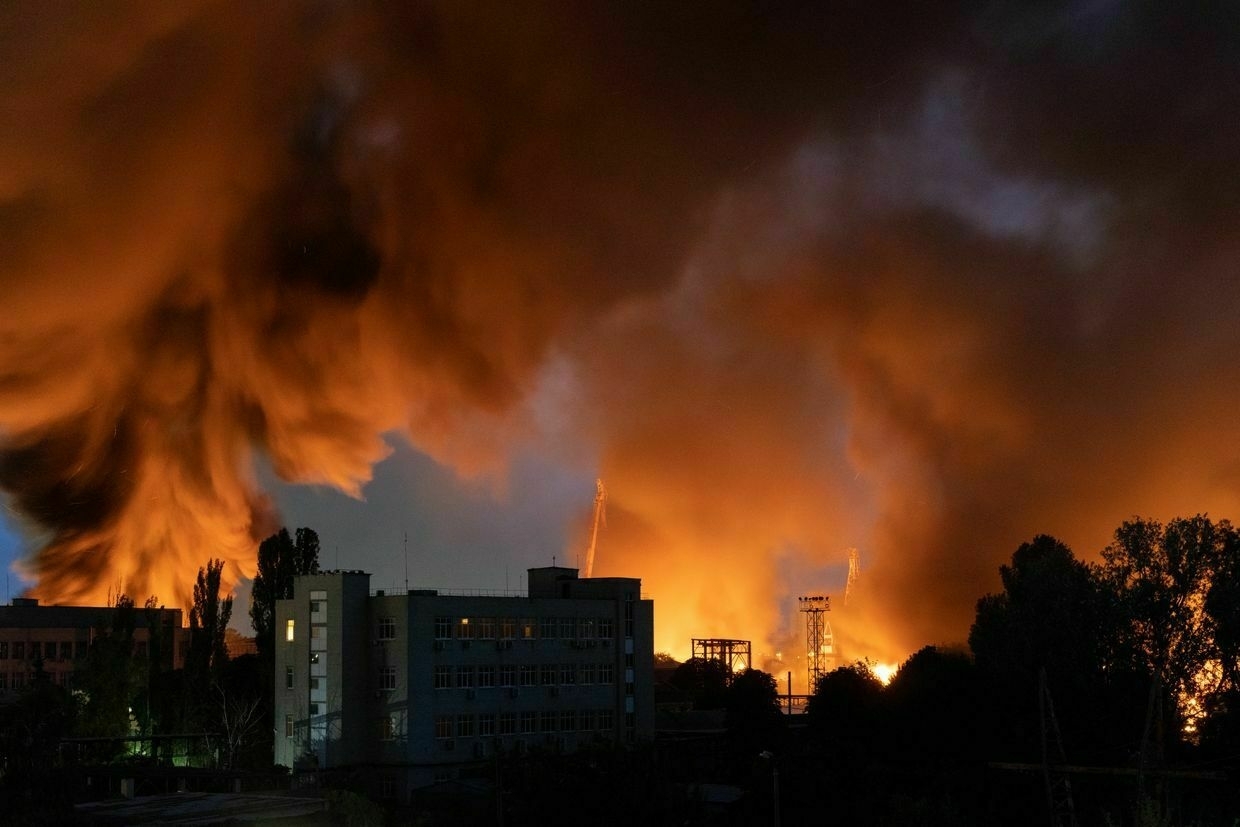
-
Oil tanker damaged by blast weeks after visiting Russian ports, Bloomberg reports
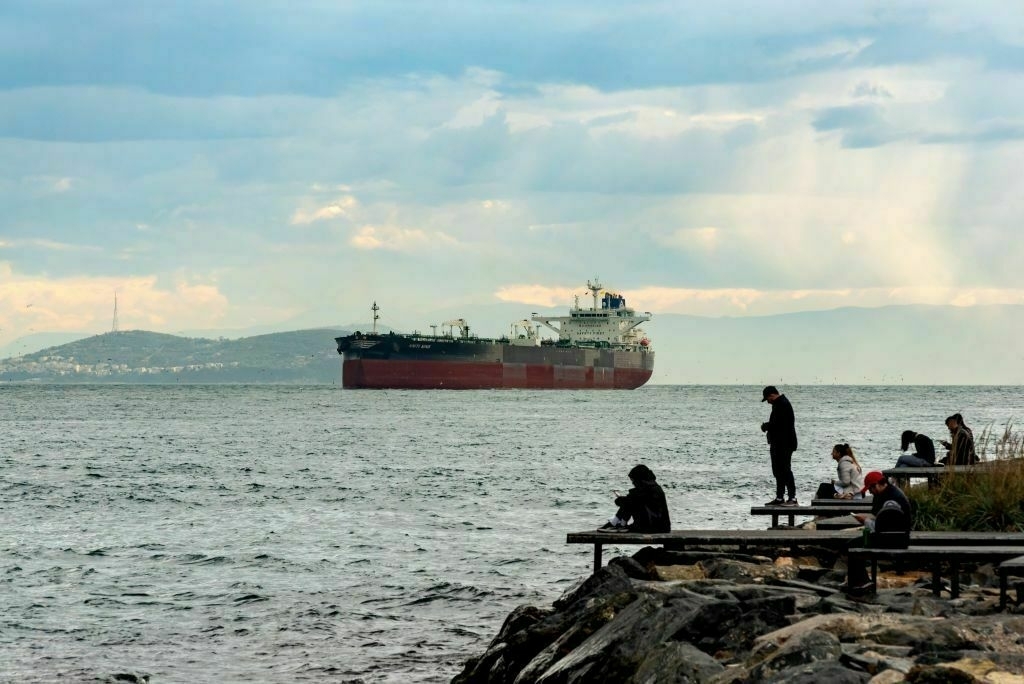
A tanker carrying 1 million barrels of oil experienced an explosion near Libya, its operator TMS Tankers said on June 30. The vessel, Vilamoura, is now being towed to Greece, where the extent of the damage will be assessed upon arrival.
The blast caused the engine room to flood due to water intake, though the cause of the explosion remains unclear, according to a company spokesperson.
The spokesperson confirmed that the crew is safe and no pollution has been reported. The incident comes amid a series of unexplained blasts targeting oil tankers that had previously visited Russian ports. In response, shipowners have started inspecting their vessels for mines using divers and underwater drones.
Vilamoura had visited Russian oil terminals twice since April, loading Kazakh-origin crude rather than Russian oil. According to Bloomberg vessel-tracking data, the tanker called at the Russian port of Ust-Luga in early April and at the Caspian Pipeline Consortium (CPC) terminal near Novorossiysk in May. Both terminals primarily handle Kazakh crude exports.
Maritime risk consultancy Vanguard Tech reported that four other vessels have been damaged by explosions since the beginning of the year. Each had recently docked at Russian ports, the firm said.
Ukraine has targeted Russian energy assets throughout the full-scale invasion, including a drone strike in February on the CPC pipeline, a route responsible for moving roughly 80% of Kazakhstan’s oil exports.
-
Not only the Chinese! Ukrainian fighters captured mercenaries from Cameroon #shorts
-
Loss of Ukraine lithium deposit to Russia won’t impact minerals deal, says investor
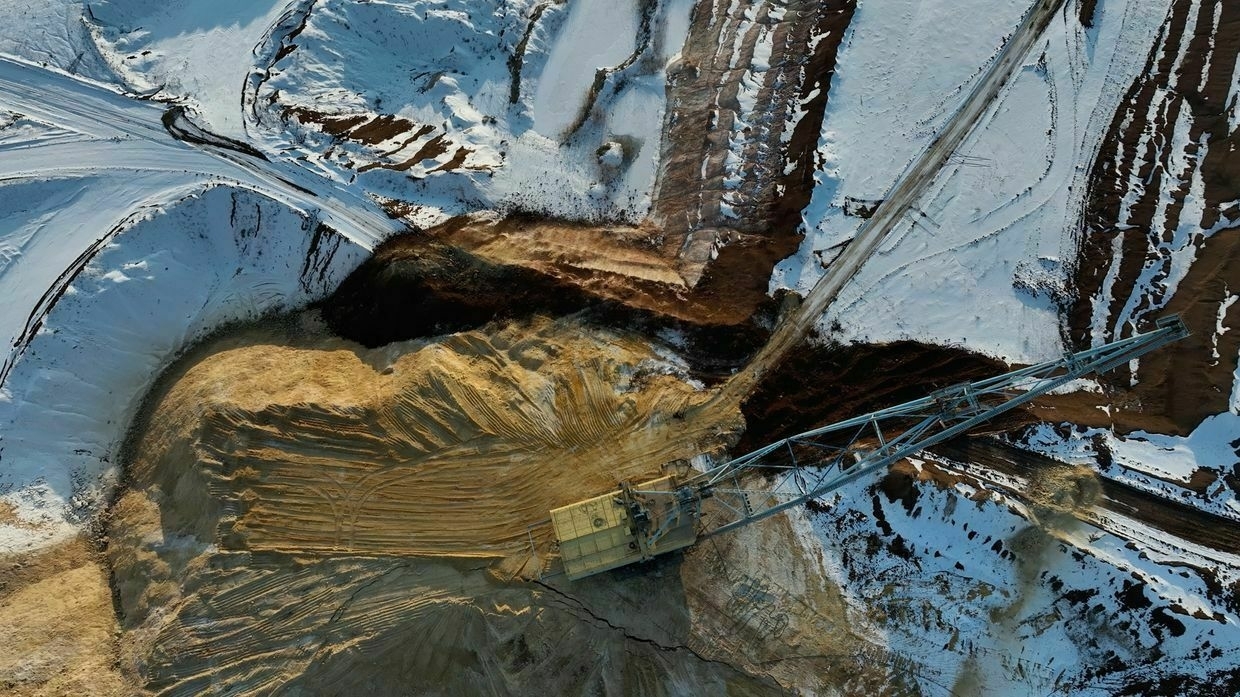
Russian troops have taken over the site of one of Ukraine’s most valuable lithium deposits near the village of Shevchenko, Donetsk Oblast, as Russia ramps up its summer offensive.
While Ukrainian troops control territories near the site, the deposit is now under Russian occupation, Roman Pohorilyi, founder of open-source mapping project Deep State Map, told the Kyiv Independent.
Ukraine’s military said its forces are continuing to fight around the village, with Ukrainian forces on the western outskirts and Russian forces on the eastern side, Viktor Trehubov, the spokesperson for Ukraine’s Khortytsia group of forces, told the Kyiv Independent. The untapped 40-acre plot lies less than two kilometers east of the village.
“There are active hostilities. They are ongoing across the entire section, across all of the Novopavlivka (front),” Trehubov said.Lithium, used in electric vehicle batteries, is one of the key critical raw materials highlighted by the U.S. in the agreement that was signed on April 30.
The reported Russian takeover of the deposits comes just two months after Ukraine signed a landmark critical minerals agreement with the U.S. to attract investment to the war-torn country, particularly to its strategic resources, including its untapped lithium reserves.
But despite Ukraine's apparent loss of the deposit, it is unlikely to have an impact on the agreement, Serhii Fursa, deputy managing director at investment firm Dragon Capital, told the Kyiv Independent.
“It was obvious that it was under huge risk of occupation and nobody assumed it would be a good asset for any kind of deal,” Fursa said.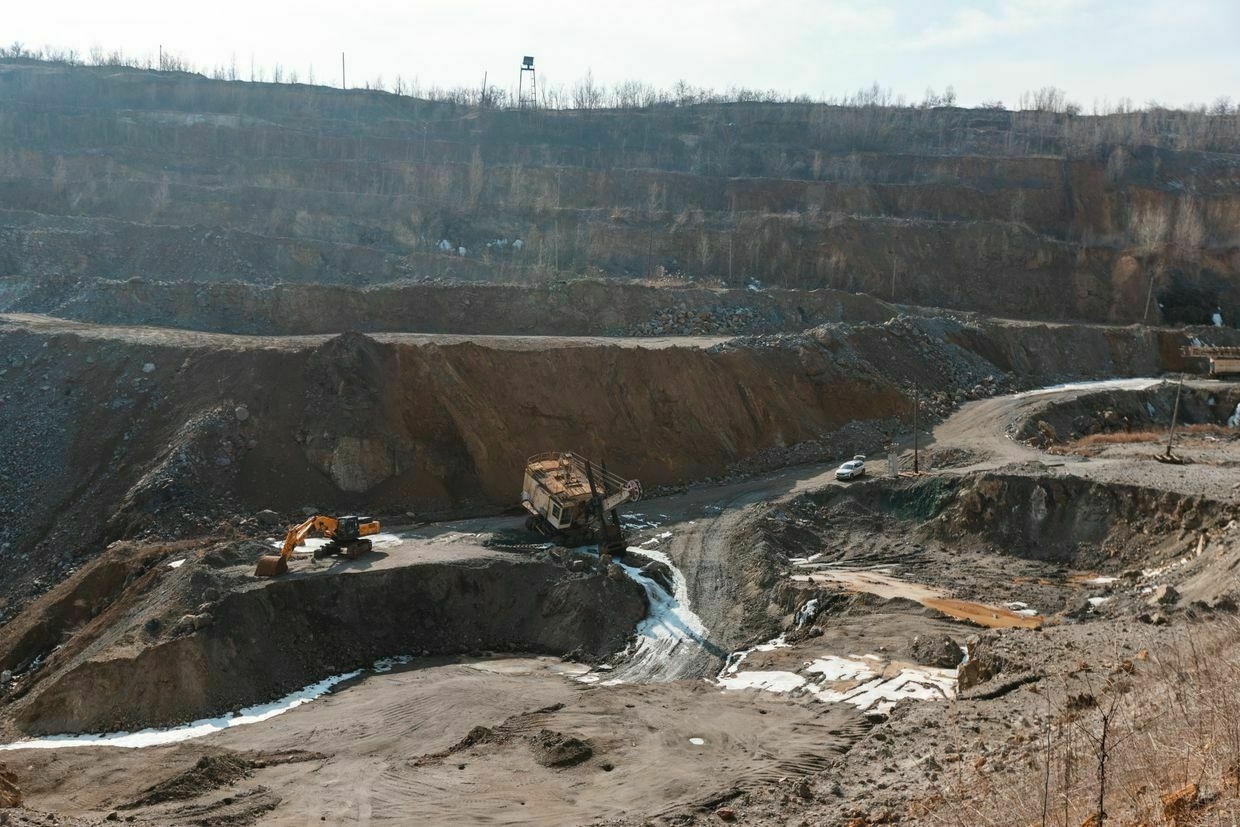
View of the Zavalivskyi graphite quarry in Zavallia, Kirovohrad Oblast, Ukraine, on Feb.28, 2025. The plant produces about 10 types of graphite for applications ranging from brake pads to lithium-ion batteries. (Arsen Dzodzaiev / Global Images Ukraine via Getty Images) The Kyiv Independent reached out to Ukraine's Ecology Ministry to confirm the site had been taken, but the ministry did not return the request for comment by the time of publication. The Economy Ministry also did not reply to a request for comment on the economic fallout of losing the deposits.
Ukraine now has only two out of four lithium deposits left, both in central Ukraine. Russian forces occupied the Kruta Balka deposit in Zaporizhzhia Oblast in the first year of the full-scale invasion.
Lithium, used in electric vehicle batteries, is one of the key critical raw materials highlighted by the U.S. in the agreement that was signed on April 30. Kyiv initially wanted Washington to promise security guarantees as part of the deal, but after protracted negotiations that threatened to tarnish U.S.-Ukraine relations, guarantees were not included.
Kyiv is planning to open up the large Dobra lithium field in central Ukraine, containing between 80-105 million metric tons of lithium ore, to private investors, marking the first project under the agreement.
The Shevchenko deposit is smaller, with an estimated volume of 11 to 14 million tons of ore, according to the mining company European Lithium, which previously held the license to mine the deposit. The ore is unique in Ukraine as it contains 90% spodumene, a mineral rich in lithium, making it easy to extract.European Lithium never mined the Shevchenko deposit and in 2023 said it no longer laid claim to it, citing its proximity to the front line.
Initially, Russia claimed to have captured Shevchenko as clashes intensified in the region amid Russia’s summer offensive on June 26. The following day, the New York Times reported that the lithium deposit had been captured, although Khortytsia told the Kyiv Independent that Russian forces had not yet captured the village.
Ukraine is one of the few European countries to have high deposits of lithium and holds one-third of the European Union's reserves and approximately 3% of global lithium reserves, according to the Kyiv School of Economics.
Demand for lithium is growing, with Australia and China topping the list of producers.
Ukraine, US plan to launch minerals investment fund by year’s end“We discussed very concrete steps how to make this fund operational during this year,” Ukrainian Economy Minister Yulia Svyrydenko said during a visit to Washington.The Kyiv IndependentTim Zadorozhnyy
 Subscribe to the NewsletterUkraine Business Roundup
Subscribe to the NewsletterUkraine Business Roundup<span data-sanitized-id="ukraine-business-roundup-info" data-sanitized-class="ukraineBusinessRoundup__info"></span> <button data-sanitized-id="ukraine-business-roundup-subscribe-btn" data-sanitized-class="ukraineBusinessRoundup__form_button"> <span data-sanitized-class="ukraineBusinessRoundup__form_label">Subscribe</span> </button> </div>Ukraine gets $1.7 billion loan from Canada backed by Russian assets
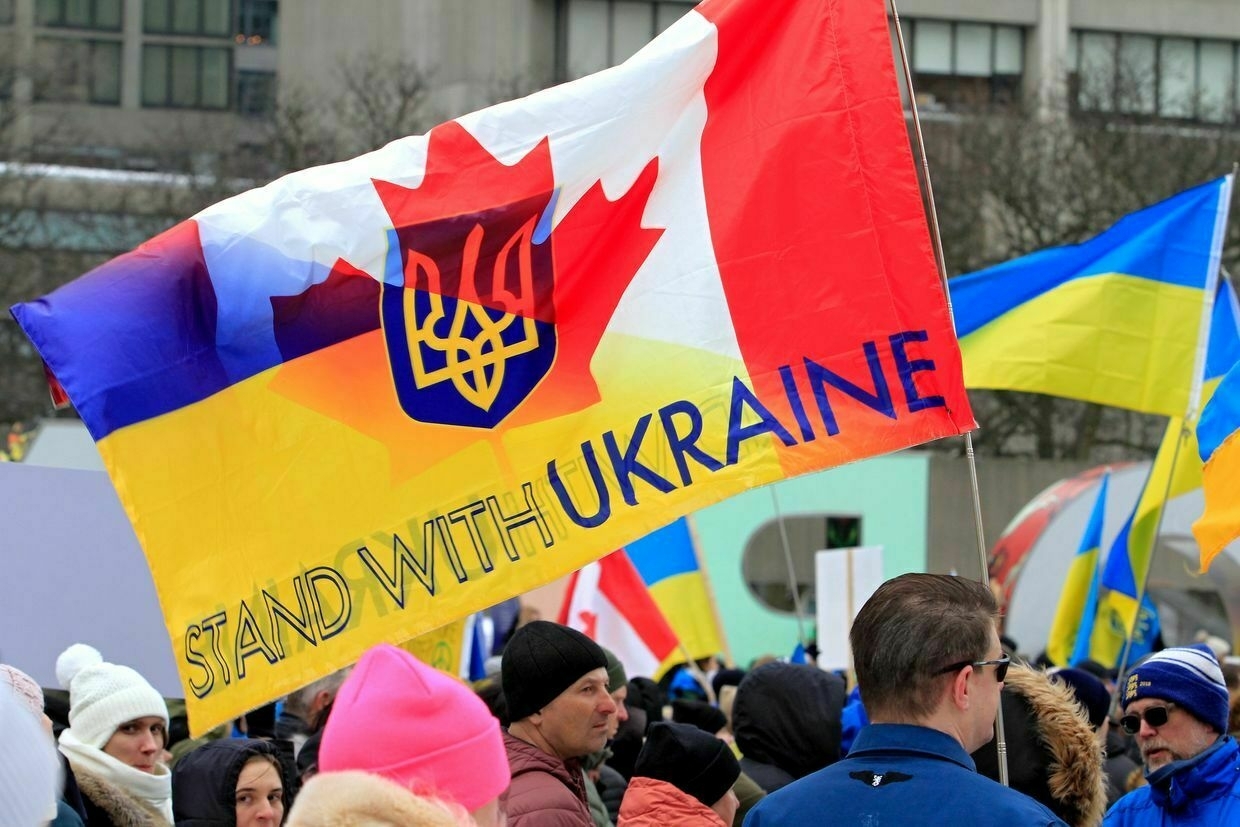
Ukraine has received a 2.5 billion Canadian dollar ($1.7 billion) loan from Canada under the Group of Seven’s (G7) Extraordinary Revenue Acceleration (ERA) initiative, Prime Minister Denys Shmyhal announced on June 30.
Under the ERA mechanism, Ukraine is expected to get $50 billion in loans that will be repaid using future profits from frozen Russian assets.
Canada’s contribution to the initiative is $3.5 billion, and the loan will be granted for 30 years. The Canadian government sent the first tranche in March.
Since the beginning of the year, Ukraine has received about $17.6 billion from Russia’s frozen assets, according to Shmyhal.
“We insist on the complete confiscation of the frozen funds of the Russian Federation. They are needed to pay compensation to victims of the aggression and to rebuild our country. This will also be an act of justice to prevent future wars of aggression,” Shmyhal said.
Since Russia’s full-scale invasion in 2022, G7 countries have frozen approximately $300 billion in Russian sovereign assets.
The ERA initiative, backed primarily by the U.S. and the EU, aims to use profits from these frozen assets to finance Ukraine’s defense and reconstruction.
Smashing previous monthly record, Russia launches 5,337 kamikaze drones against Ukraine during JuneRussia launched a record 5,337 Shahed-type drones against Ukraine in June, according to data from the Ukrainian Air Force and Dragon Capital, smashing the previous record of 4,198 set in March. Russia’s bombardments, a fact of life after three years of full-scale war, have intensified dramatically in MayThe Kyiv IndependentYuliia Taradiuk
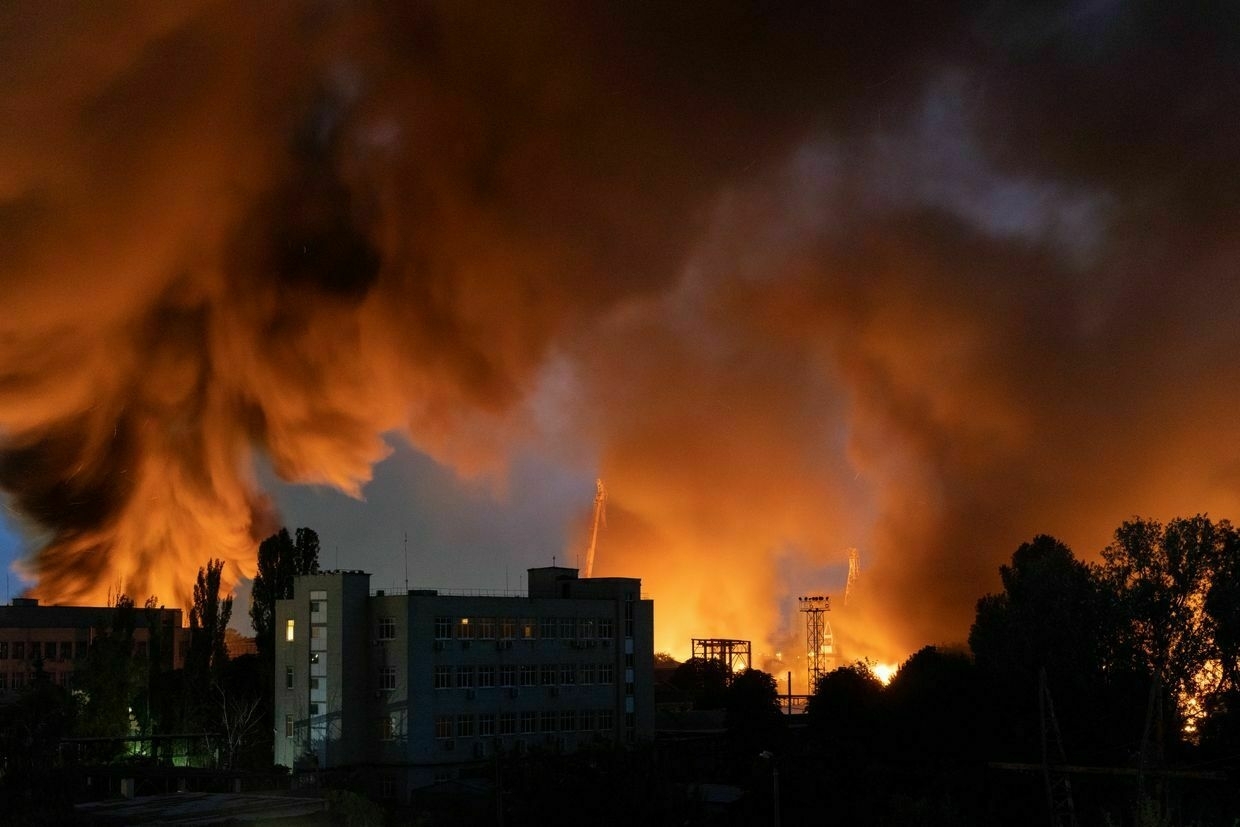
Norway to send F-35 fighter jets to Poland to cover transportation hub for Ukrainian military aid
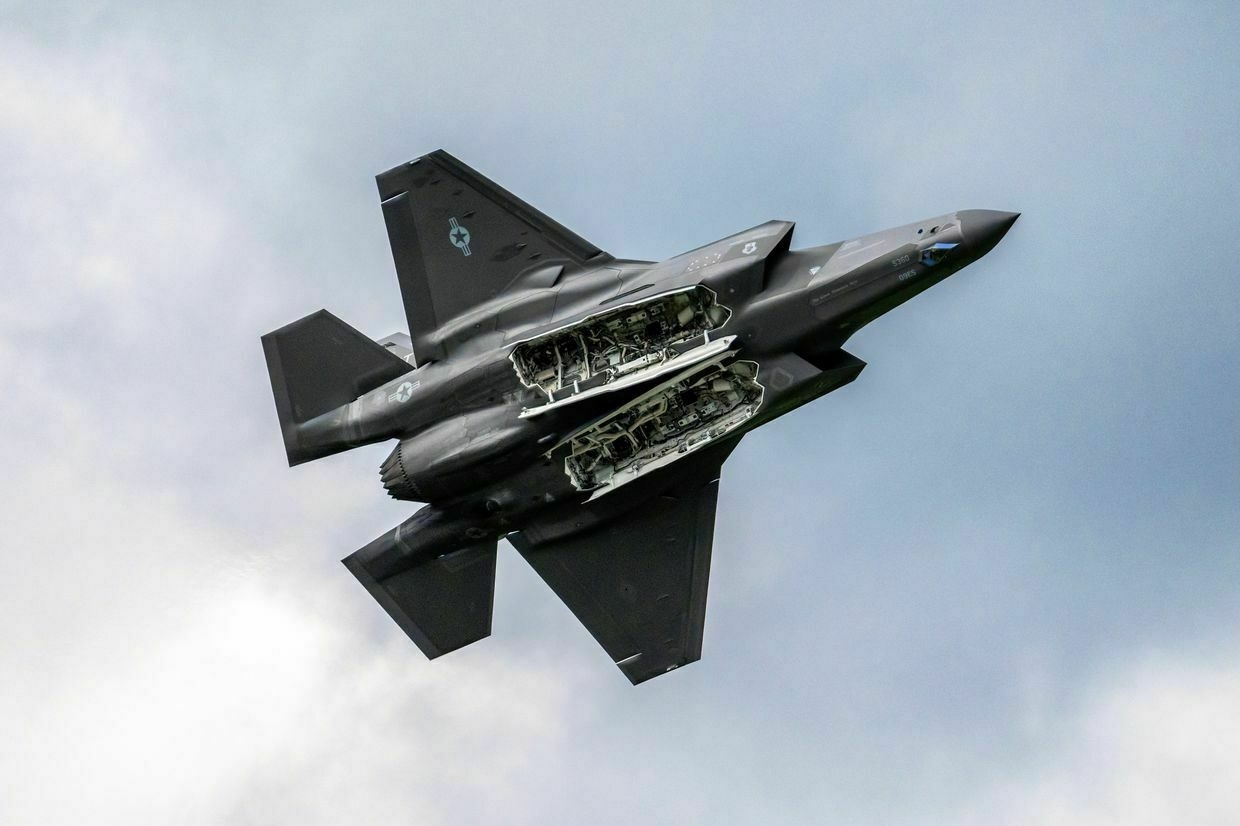
Norway will send F-35 fighter jets to Poland in the fall to protect the Rzeszow-Yasenka airport, one of the key transportation hubs for NATO military aid to Ukraine, Norwegian Defense Ministry announced on June 30.
The news came as Russia has escalated attacks against Ukrainian cities over the past weeks, launching record 400-500 unmanned aerial vehicles (UAVs) per night.
Norway is thus strengthening its contribution to NATO’s air and missile defense, while the main goal of the mission is to support the protection of Polish airspace and a key logistics center for assistance to Ukraine, the statement read.
“This is a vital contribution. We are helping ensure that support to Ukraine reaches its destination, and that Ukraine can continue its fight for freedom,” Norwegian Defense Minister Tore Sandvik said.
The Rzeszow-Jasionka airport is located less than 100 kilometers (62 miles) from the Ukrainian border and transports a significant percentage of Western materiel bound for the front lines in Ukraine. Polish Prime Minister Donald Tusk said that 90% of aid for Ukraine was going through the airport in Rzeszow as of Novermber 2024.
It is also a main stopover point for foreign leadership traveling to Kyiv on official visits.
In January, German Defense Minister Boris Pistorius announced that Berlin will deploy the promised Patriot air defenses around the Polish airport to protect it.
Smashing previous monthly record, Russia launches 5,337 kamikaze drones against Ukraine during JuneRussia launched a record 5,337 Shahed-type drones against Ukraine in June, according to data from the Ukrainian Air Force and Dragon Capital, smashing the previous record of 4,198 set in March. Russia’s bombardments, a fact of life after three years of full-scale war, have intensified dramatically in MayThe Kyiv IndependentYuliia Taradiuk
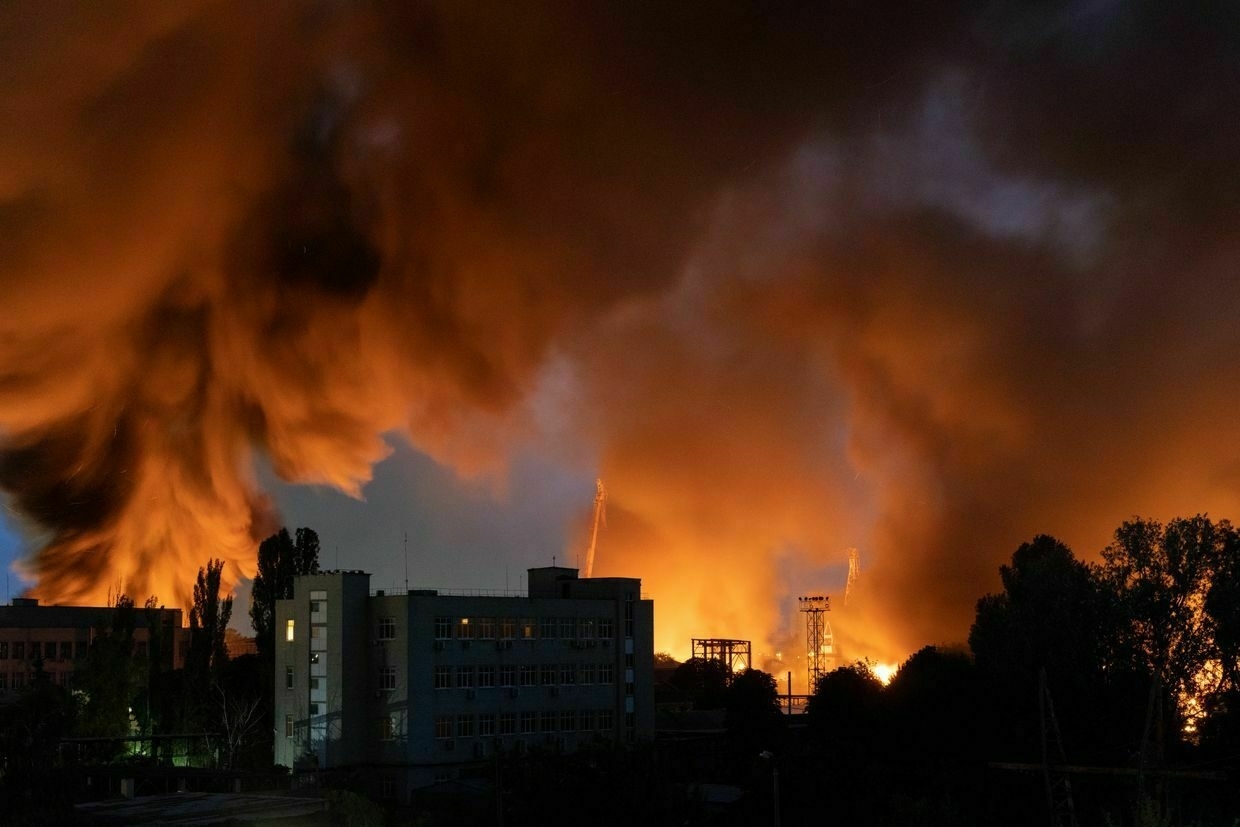
Ukraine war latest: Ukrainian forces push Russian army away from Sumy
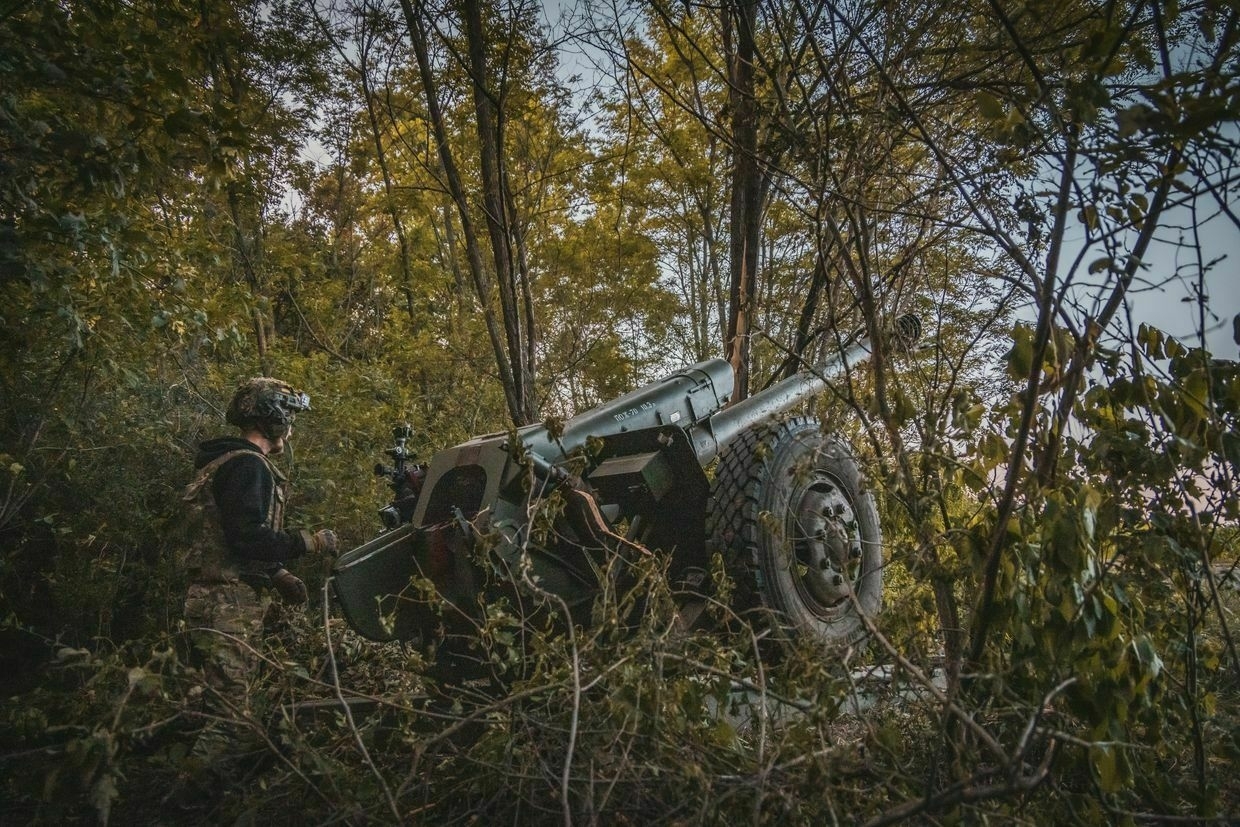
Key developments on June 30:
- Ukrainian forces push Russian army away from Sumy, General Staff says
- Ukrainian military again denies reports on Russian troops entering Dnipropetrovsk Oblast
- After months of stalling, Russia blames Ukraine, US for slow pace of peace talks
- Germany vows to pursue ‘every path’ to boost Ukraine’s air defenses, FM Wadephul says in Kyiv
Ukrainian forces have stabilized the situation in Sumy Oblast and pushed the Russian army further away from Sumy, the region’s capital, Ukraine’s General Staff reported on June 30.
Moscow launched its new summer campaign in May, aiming to push deeper into Ukraine’s northeastern and eastern regions and disregarding Kyiv’s calls for an unconditional ceasefire.
Ukrainian troops advanced near the village of Oleksiivka, located less than 30 kilometers (18 miles) from the city of Sumy, and liberated the village of Andriivka, which had been captured by Russia in early June, the statement read.
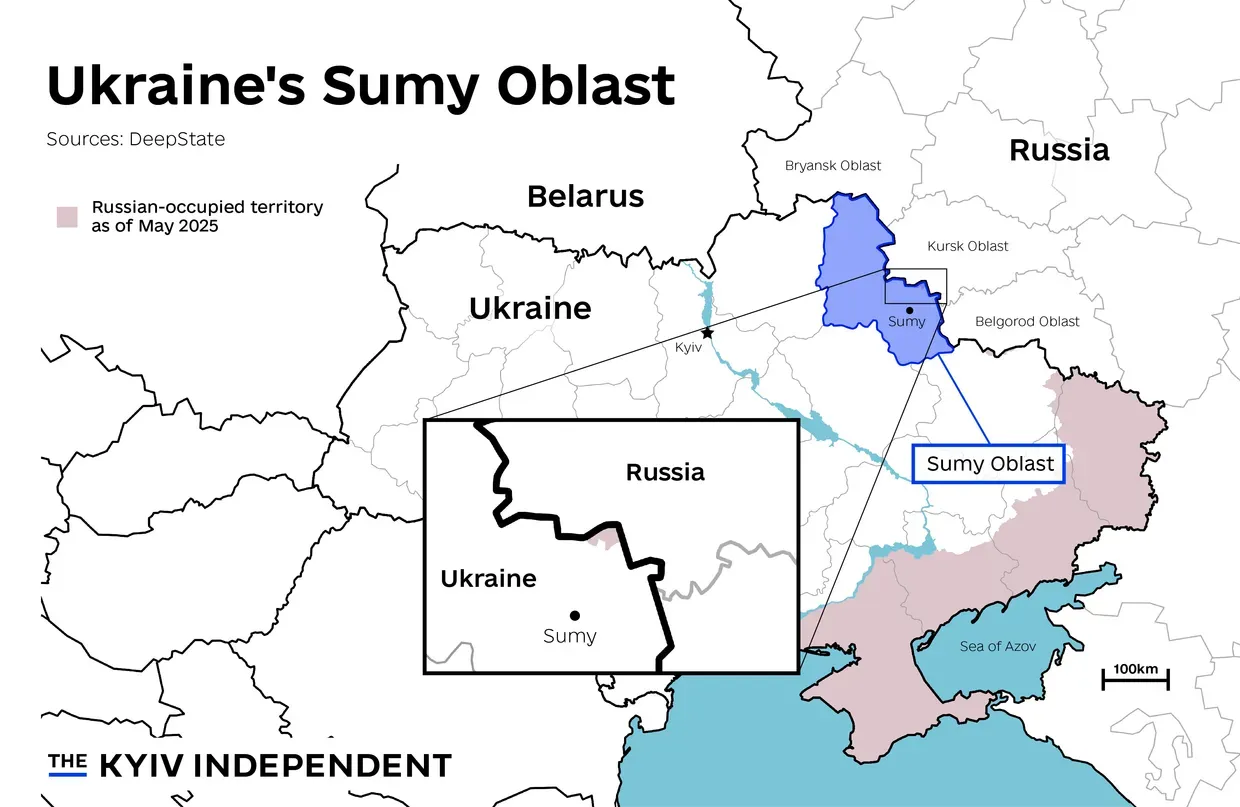
A map of Ukraine’s Sumy Oblast (Nizar al-Rifal/The Kyiv Independent) In the meantime, Ukraine also stopped the Russian advance along the Yunakivka-Yablunivka-Novomykolayivka-Oleksiivka-Kindrativka line and the border with Russia near Kursk Oblast, according to the General Staff.
Russia has deployed its best brigades on this section of the front line and is using long-range artillery, aircraft, and attack drones, the General Staff said.
President Volodymyr Zelensky also said on June 30 that Ukrainian troops had halted the Russian offensive in Sumy Oblast.
“The Russian plan for an offensive in Sumy Oblast is not succeeding — thanks to every Ukrainian unit operating in the area,” Zelensky said after a meeting with the military leadership and Defense Minister Rustem Umerov.
Smashing previous monthly record, Russia launches 5,337 kamikaze drones against Ukraine during JuneRussia launched a record 5,337 Shahed-type drones against Ukraine in June, according to data from the Ukrainian Air Force and Dragon Capital, smashing the previous record of 4,198 set in March. Russia’s bombardments, a fact of life after three years of full-scale war, have intensified dramatically in MayThe Kyiv IndependentYuliia Taradiuk
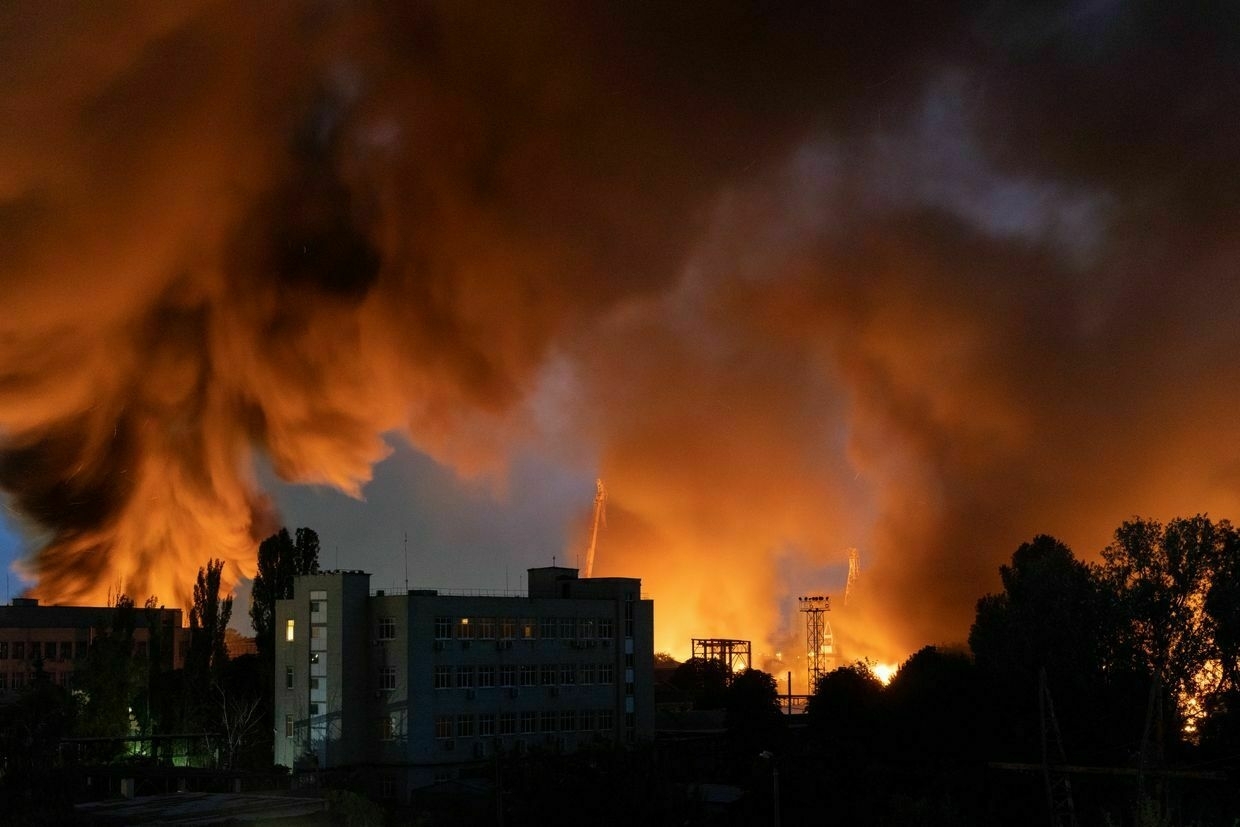
Ukrainian military again denies reports on Russian troops entering Dnipropetrovsk OblastThe Ukrainian military on June 30 denied the latest reports that Russian troops had entered Dnipropetrovsk Oblast.
Since June 29, the Ukrainian battlefield monitoring group DeepState has marked a “gray” zone in Ukraine’s Dnipropetrovsk Oblast, identifying potential fighting in this section of the front line. Near the village of Dachne in Dnipropetrovsk Oblast, the zone extends almost a kilometer into the region.
Meanwhile, Kremlin propagandists claimed on Telegram that Russian troops had captured Dachne.
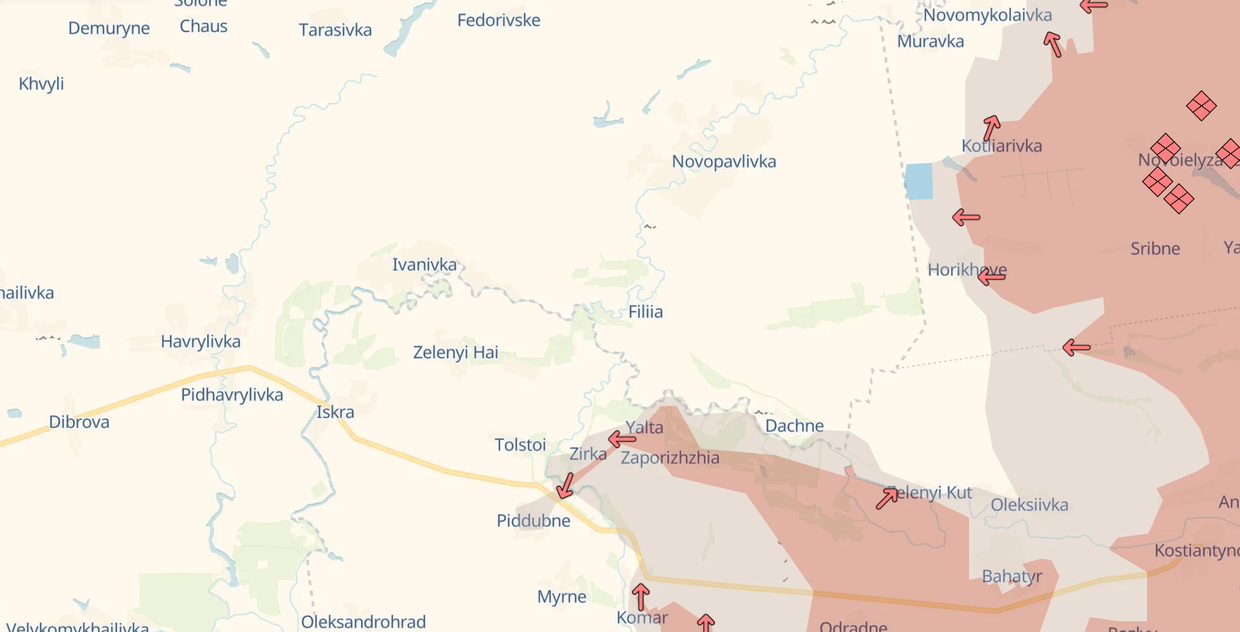
The estimated Russian advance in Donetsk Oblast as of June 29, 2025. (DeepState/OpenStreet Map) The reports were denied by spokespeople of two Ukrainian brigades and the Khortytsia group of forces on June 30, Suspilne reported.
“There are very active battles in the villages located near the administrative border of the region,” Viktor Tregubov, spokesperson for Ukraine’s Khortytsia group of forces, told Suspilne, adding that Ukraine is holding the defense line near the villages of Yalta, Komar, and Shevchenkove.
Tregubov added that Russian troops had not entered Dnipropetrovsk Oblast as of noon on June 30.
The press service of the 3rd brigade of the National Guard, stationed in the nearby Pokrovsk sector of the front line, also denied the information about the breakthrough.
Nazar Voitenkov, spokesperson for the 33rd Separate Mechanized Brigade, based in Zaporizhzhia Oblast, also said that the Russian army had made no advances into Dnipropetrovsk Oblast.
“We are holding the defense line. The line is constantly changing, but the enemy has not broken through,” Voitenkov said.
Andrii Kovalenko, head of Ukraine’s counter-disinformation center, said on Telegram that fighting is taking place near the region’s administrative border, and Russian FPV (first-person-view) drones are also flying into Dnipropetrovsk Oblast,
But despite the heavy battles, there is no breakthrough, he added.
Russia pulls its scientists out of Iranian nuclear plant, as Israeli strikes threaten decades of collaborationIsrael’s strikes on Iranian nuclear facilities have alarmed none more than Russia, the country that first brought nuclear power to Iran in defiance of Western objections. We’re “millimeters from catastrophe,” said Kremlin spokeswoman Maria Zakharova on June 18 in response to a bombing campaign that Israel launched against Iran on June 13. Decades of conflict with the West have united Iran and Russia, despite a cultural gulf between the two nations that dwarfs the Caspian Sea that physically di The Kyiv IndependentKollen Post
The Kyiv IndependentKollen Post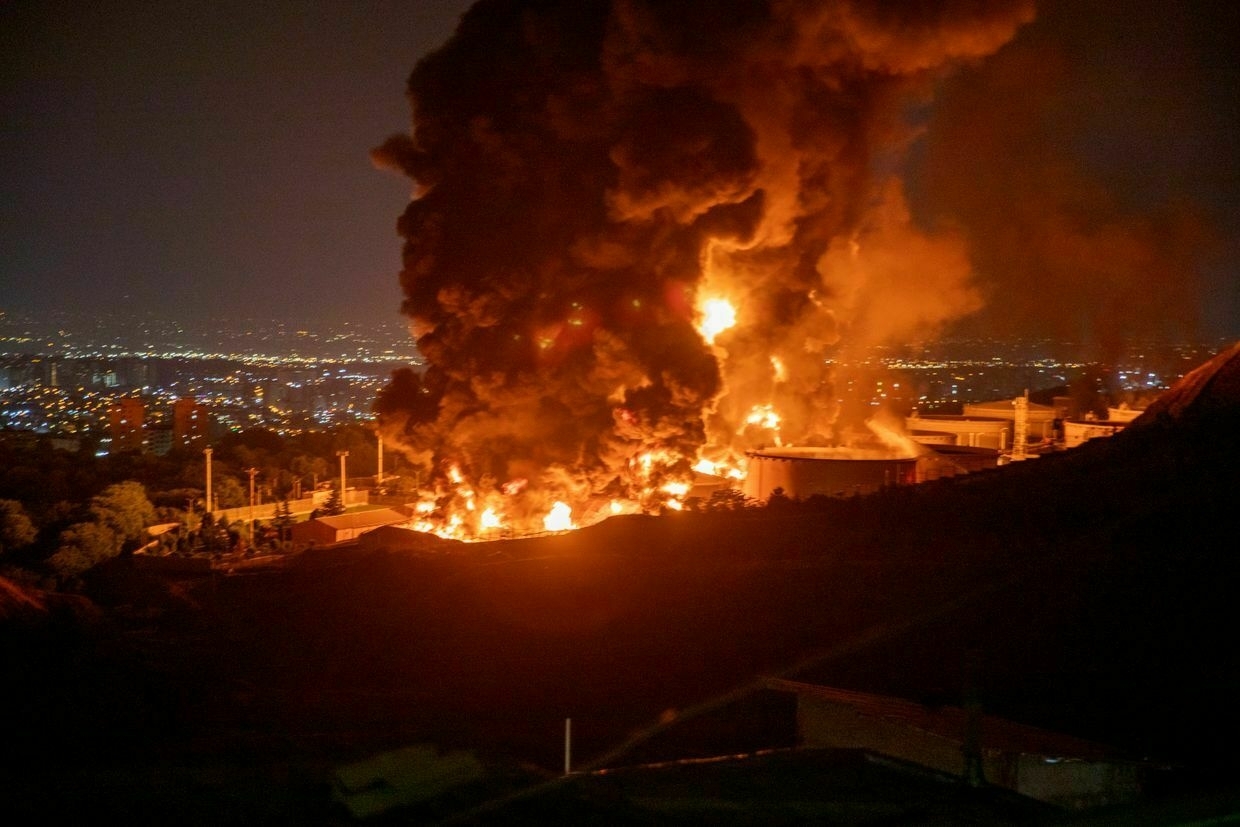
After months of stalling, Russia blames Ukraine, US for slow pace of peace talksAfter months of diplomatic stalling, the Kremlin on June 29 blamed Kyiv and Washington for the lack of progress in peace talks, with Kremlin spokesman Dmitry Peskov saying the pace of negotiations hinges on Ukraine’s position, the effectiveness of U.S. mediation, and battlefield developments.
“A lot depends, naturally, on the position of the Kyiv regime,” Peskov told Belarus 1 TV, in comments reported by Reuters, adding: “It depends on how effectively Washington’s mediating efforts continue."
Russia has repeatedly refused to a U.S.-proposed ceasefire agreement, has escalated attacks on Ukrainian civilians, and Russian President Vladimir Putin declared earlier this month that “all of Ukraine is ours."
Peskov made the remarks in a televised interview, as the full-scale war enters its fourth summer with no comprehensive ceasefire in sight, and two mostly inconclusive rounds of peace talks.
Russia and Ukraine have held two rounds of face-to-face talks in Istanbul this year, first on May 16 and again on June 2, following more than three years without direct negotiations. The meetings resulted in significant prisoner exchanges, but no significant steps toward a ceasefire.
During the June 2 meeting, both sides presented proposals for ending the war, but Putin later describedthem as "absolutely opposite" memorandums.
Ukraine's delegation, led by Defense Minister Rustem Umerov, demanded an unconditional 30-day ceasefire, a position supported by Western partners, while Russia insisted on a 2–3-day limited truce to recover the bodies of fallen soldiers.
"Russia rejects even the very idea of stopping the killings," Umerov said after the talks. "That's why we appeal to the world: pressure is needed for real peace, not for an imitation of negotiations."
Despite the deadlock, Russia said it is open to a third round of negotiations. "In general, we are ready for this," Putin told reporters on June 27, suggesting Istanbul could again serve as the venue.
Turkish President Recep Tayyip Erdogan confirmed Ankara's willingness to host, and said efforts are underway to arrange a direct meeting between Putin and President Volodymyr Zelensky — possibly with U.S. President Donald Trump joining the talks.
Zelensky has expressed support for a trilateral format and discussed the idea during the recent NATO summit in Brussels, where he and Trump also spoke about enhanced U.S. military assistance and co-production of air defense systems and drones.
So far, Trump has not imposed the additional sanctions on Russia he promised if peace efforts failed. "If the Istanbul meeting brings nothing, that clearly means strong new sanctions are urgently needed," Zelensky said on June 2.
While the Kremlin continues to reject a broad ceasefire, its forces are advancing in Ukraine's southeast, gaining territory in Donetsk and Dnipropetrovsk oblasts, and intensifying missile and drone strikes on civilians.
No date has been set for the next round of talks.
Russia-Iran alliance wavers as Tehran suffers major blowsTehran, Russia’s main ally in the Middle East, has been dealt a heavy blow as Israel dismantled its network of proxies and then struck targets in Iran. The recent Iranian-Israeli war, which ended with a ceasefire on June 24, showed that the regional balance of power has shifted in Israel’s favor. This could have a major impact on Russian-Iranian relations as Moscow will have to recalibrate its approach to the region. Russian-Iranian cooperation is likely to continue but Iran’s ability to help The Kyiv IndependentOleg Sukhov
The Kyiv IndependentOleg Sukhov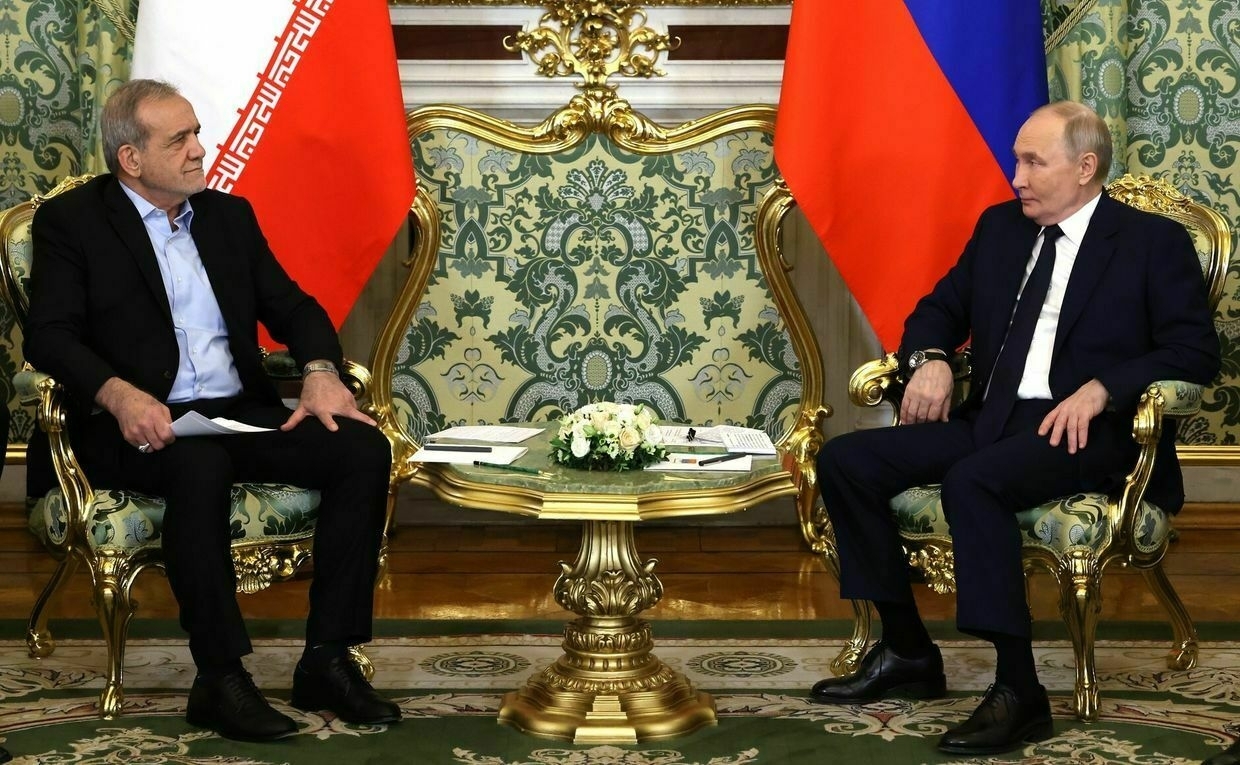
German minister vows to pursue 'every path' to boost Ukraine's air defensesGerman Foreign Minister Johann Wadephul pledged on June 30 that Berlin is exploring "every possible path" to provide Ukraine with additional air defense systems, amid intensifying Russian missile and drone attacks, according to RBK-Ukraine.
Speaking at a press conference during his visit to Kyiv, Wadephul said Germany is working with its defense industry, European allies, and the U.S. to urgently secure more systems for Ukraine's air shield.
"We are going down every path available," Wadephul said. "The German defense industry is trying to expand its capacity. We're speaking with our European partners, and I believe we must also move forward with the United States."
He added that he remains in close contact with German Defense Minister Boris Pistorius to assess whether existing systems from Germany's own stockpiles can be redirected to Ukraine.
Wadephul's visit came just a day after Russia launched its largest aerial assault on Ukraine to date, firing 477 drones and 60 missiles in a 24-hour period. In a video message posted on social media earlier on June 30, the German minister described Ukraine as "a country once again haunted by war," and reaffirmed Germany's solidarity.
"Germany stands by Ukraine," Wadephul said. "We must not allow freedom to be lost here. We have to support this country and ensure that a ceasefire is finally achieved. (Russian President Vladimir) Putin must realize he cannot continue this war and must negotiate a peace solution."
Ukrainian Foreign Minister Andrii Sybiha welcomed Wadephul's visit in a post on X, saying the two discussed how to counter Russian aggression and deepen bilateral ties.
Sybiha said they also spoke about Germany's role in Ukraine's development of long-range capabilities and drones, calling it "win-win cooperation"— as well as Berlin's support for the 18th EU sanctions package and Ukraine's path to EU membership.
China unveils its new ‘graphite bomb’ — here’s how they workChina’s state TV broadcaster has revealed details of a new “graphite bomb” that can cause a “complete loss of electricity” across an area of 10,000 square meters, or knock out entire power stations, the South China Morning Post reported on June 29. An animated video released by China’s CCTV showed a missile being launched from a ground-based launcher and then flying to a target where it releases 90 small submunitions. They then bounce on the ground before exploding amid a mock-up of an electri The Kyiv IndependentChris York
The Kyiv IndependentChris York
"I am grateful to Minister Wadephul for his moral clarity and personal contribution to Ukraine's resilience," Sybiha added.
Wadephul is expected to meet with President Volodymyr Zelensky later during his visit.
The German foreign minister emphasized that witnessing the destruction firsthand is critical to understanding Ukraine's suffering and the urgency of sustained international support.
"This is indeed a difficult situation," Wadephul said. "And that is why German solidarity is so important right now."
Note from the author:
Ukraine War Latest is put together by the Kyiv Independent news desk team, who keep you informed 24 hours a day, seven days a week. If you value our work and want to ensure we have the resources to continue, join the Kyiv Independent community.
French-Ukrainian agreement on drones, captured mercenaries, and FURIA drone strikes | Front News
Ukrainian Forces Advance in Sumy region, stabilize eastern front amid intense Russian pressure
In a significant development on the Eastern Front, Ukrainian forces have reportedly advanced near the border village of Alekseevka, pushing Russian troops further away from the city of Sumy, reported Ukraine's General Staff. The Ukrainian Command also confirmed the liberation of the village of Andriivka.
Ukrainian officials noted that along the Sumy region's frontline — from Yunakivka to Yablunivka, Novomykolyivka, Oleksiivka, and Kondrativka — Russian forces have been halted, thus stabilizing the situation.
Russia has reportedly deployed elite units to this area, including motorized rifle troops, airborne assault brigades, and marines. Additionally, Russia is attempting to push back Ukrainian defenders from the Belgorod and Kursk regions.
The General Staff reported that Ukrainian forces have captured 42 Russian soldiers on the Sumy and Kursk fronts this month.
However, Pavel Narozhny, founder of the charitable organization "Reactive Mail" and a military expert, cautions that it's premature to declare full stabilization on the Sumy front, describing the current situation as a “relative calm.”
Russia has ammassed over 50,000 troops on the Sumy direction.. Commander-in-Chief of the Ukrainian Armed Forces, Oleksandr Syrskyi, claims that their advance has been halted and Ukrainian troops are countering the Russian push. Nonetheless, media outlets caution that the number of Ukrainian defenders in this area is nearly three times smaller than that of the Russian forces.
Ukrainian forces push Russian army away from Sumy, General Staff says
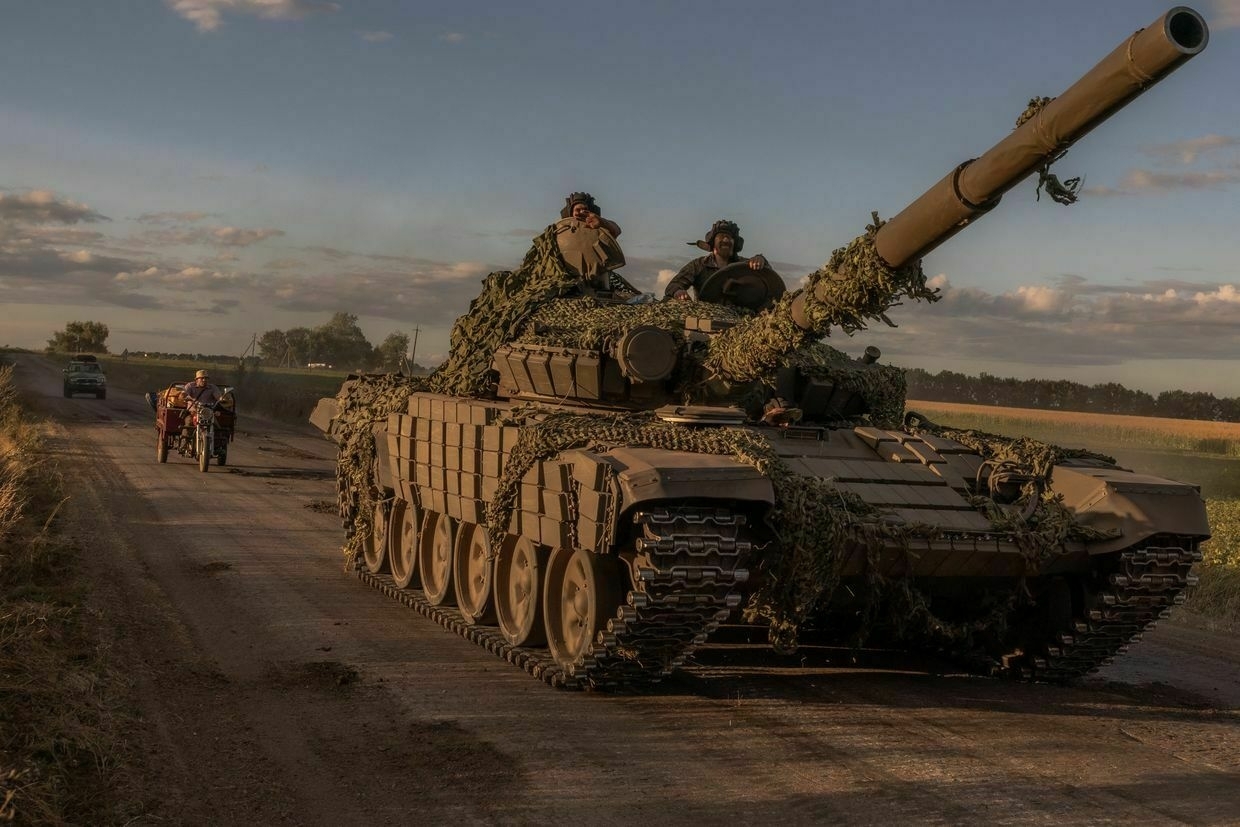
Ukrainian forces have stabilized the situation in Sumy Oblast and pushed the Russian army further away from Sumy, the region’s capital, Ukraine’s General Staff reported on June 30.
Moscow launched its new summer campaign in May, aiming to push deeper into Ukraine’s northeastern and eastern regions and disregarding Kyiv’s calls for an unconditional ceasefire.
Ukrainian troops advanced near the village of Oleksiivka, located less than 30 kilometers (18 miles) from the city of Sumy, and liberated the village of Andriivka, which had been captured by Russia in early June, the statement read.
In the meantime, Ukraine also stopped the Russian advance along the Yunakivka-Yablunivka-Novomykolayivka-Oleksiivka-Kindrativka line and the border with Russia near Kursk Oblast, according to the General Staff.
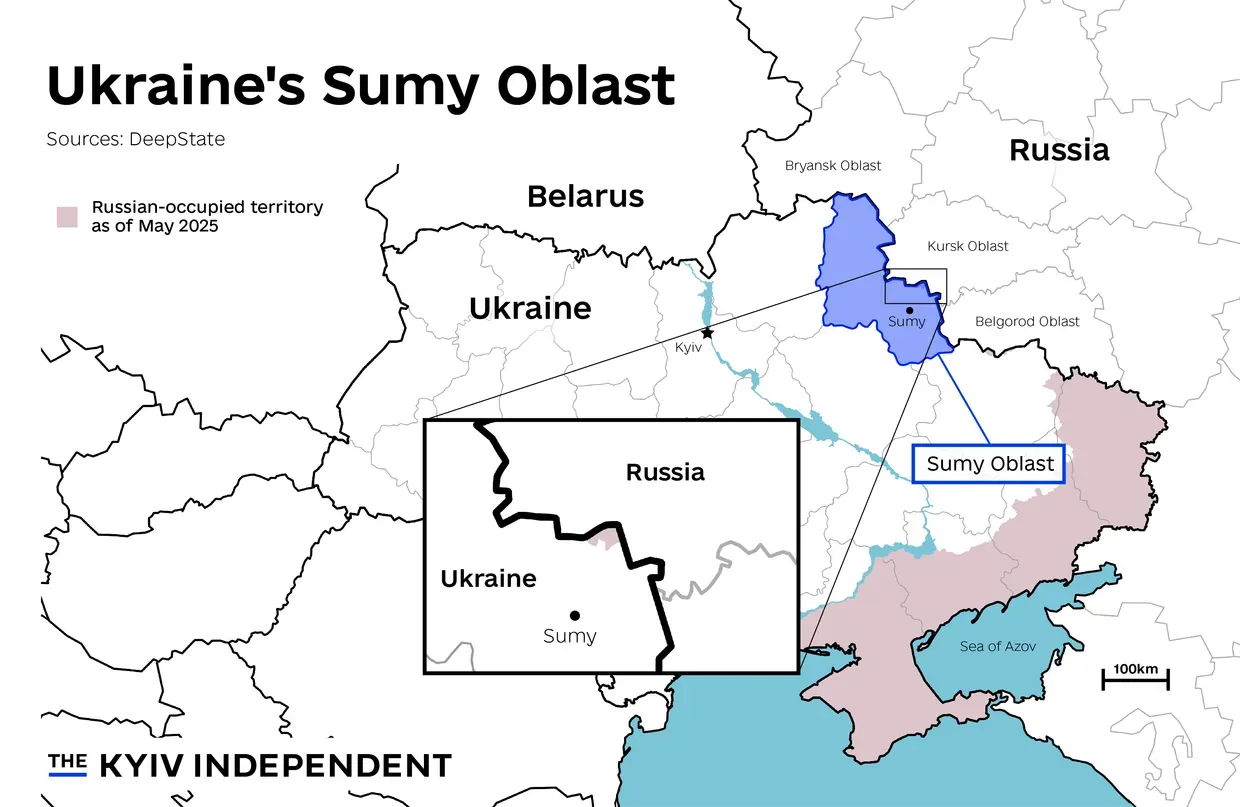
A map of Ukraine’s Sumy Oblast (Nizar al-Rifal/The Kyiv Independent) Russia has deployed its best brigades on this section of the front line and is using long-range artillery, aircraft, and attack drones, the General Staff said.
President Volodymyr Zelensky also said on June 30 that Ukrainian troops had halted the Russian offensive in Sumy Oblast.
“The Russian plan for an offensive in Sumy Oblast is not succeeding — thanks to every Ukrainian unit operating in the area,” Zelensky said after a meeting with the military leadership and Defense Minister Rustem Umerov.
The Russian offensive’s goal is to reach the administrative borders of Donetsk and Luhansk oblasts in the east and create a buffer zone in the border areas of Sumy and Kharkiv oblasts, Commander-in-Chief Oleksandr Syrskyi told journalists on June 21.
Russian forces are also attempting to fully oust Ukrainian troops from Russia’s Kursk and Belgorod oblasts.
Ukraine launched a cross-border offensive into Kursk Oblast — bordering Ukraine’s Sumy Oblast — last August, initially seizing 1,300 square kilometers (500 square miles) but losing the vast majority of this territory in a Russian counteroffensive earlier this year.
Moscow initially declared that it had fully liberated the region on April 26, but this claim was rejected by Ukraine and later disputed by Russian officials themselves.
Tired of military aid delays, Ukraine has designed its own ballistic missile — and it’s already in mass-productionUkraine announced on June 13 that its short-range Sapsan ballistic missile would go into mass production, a major development in Kyiv’s ongoing efforts to domestically produce the weapons it needs to fight Russia’s full-scale invasion. As Ukraine faces growing challenges in securing weapons from Western partners, and Russia continues launchingThe Kyiv IndependentYuliia Taradiuk
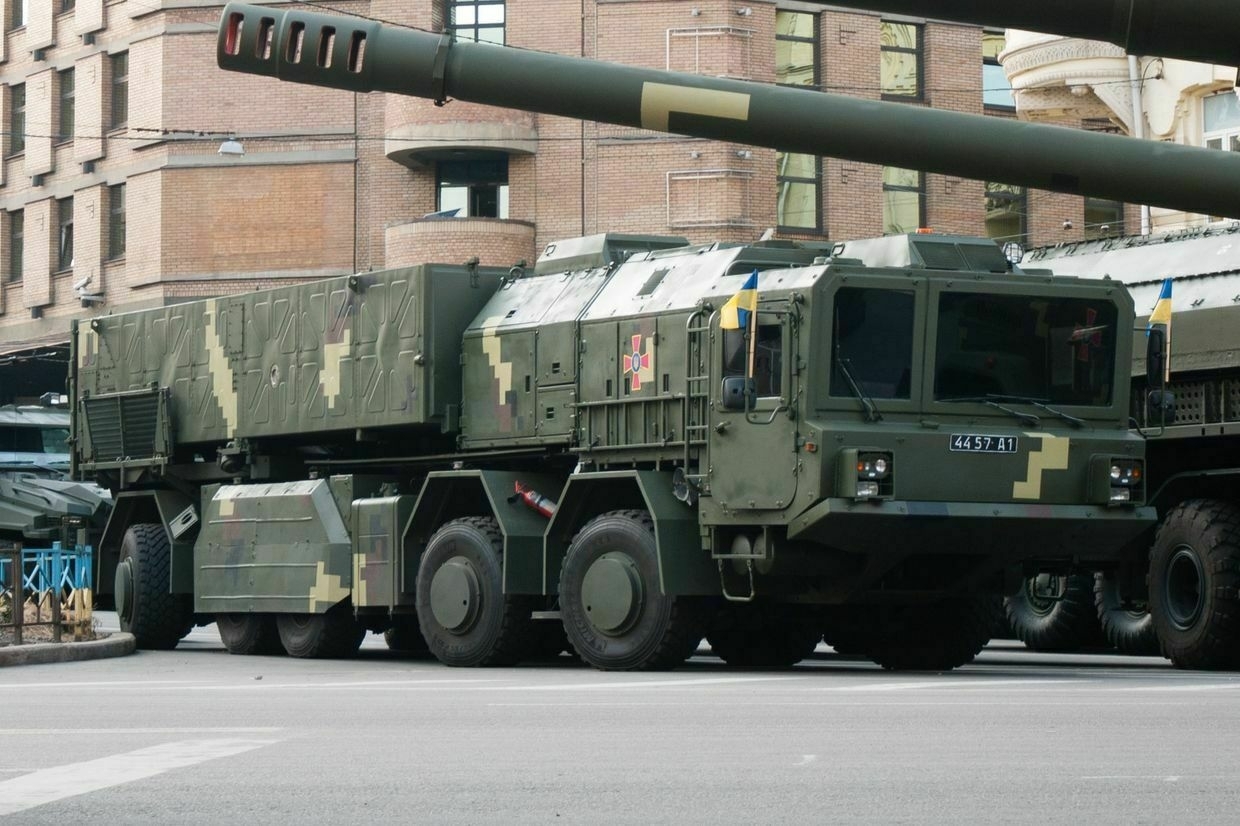
Russia-Iran alliance wavers as Tehran suffers major blows
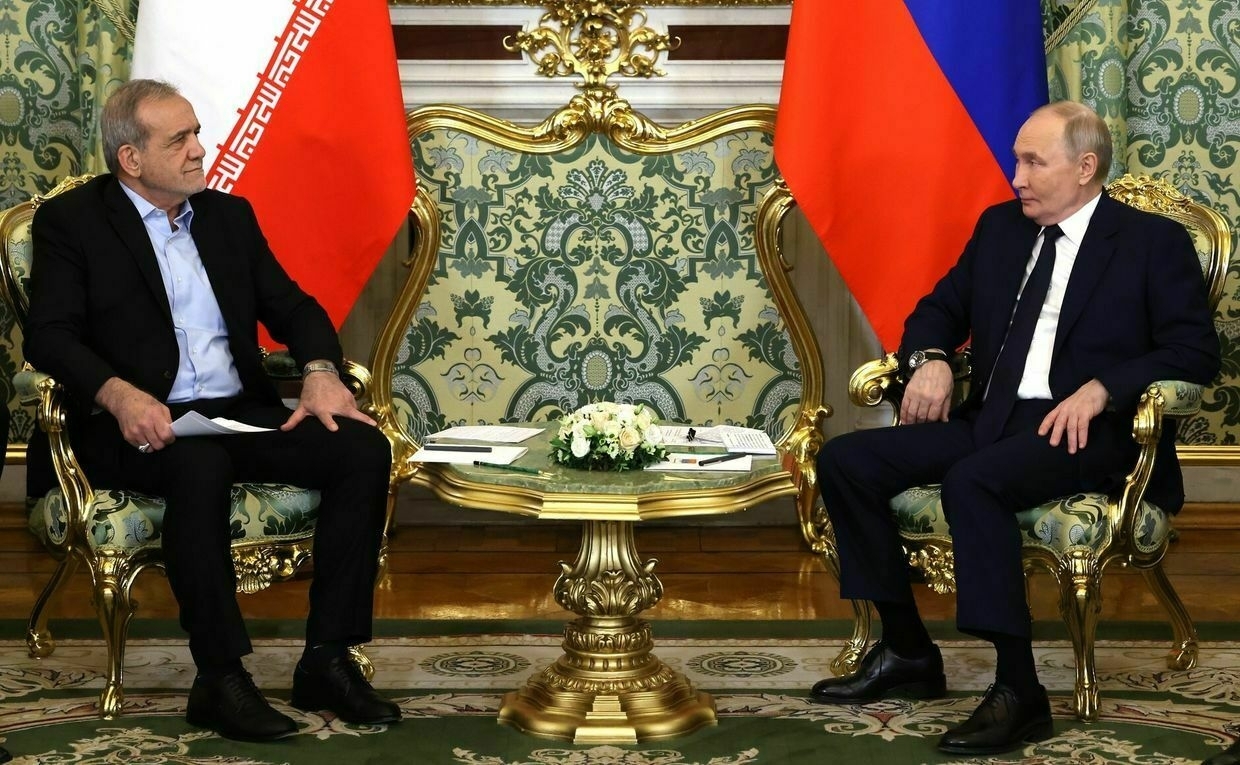
Tehran, Russia’s main ally in the Middle East, has been dealt a heavy blow as Israel dismantled its network of proxies and then struck targets in Iran.
The recent Iranian-Israeli war, which ended with a ceasefire on June 24, showed that the regional balance of power has shifted in Israel’s favor.
This could have a major impact on Russian-Iranian relations as Moscow will have to recalibrate its approach to the region.
Russian-Iranian cooperation is likely to continue but Iran’s ability to help Moscow is being diminished.
On the other hand, Russia, which is still heavily engaged in Ukraine, has few resources to spare for helping Iran.
“In public, Russian-Iranian relations will continue as business as usual,” Neil Quilliam, a Middle East expert at Chatham House, told the Kyiv Independent.
“Behind closed doors, however, Iran’s confidence in Russia has been undermined, and this no doubt will weaken the relationship.Tehran has learned to its cost that Russia is no longer a dependable ally.”
Russian-Iranian cooperationRussia has been Iran’s primary arms supplier, selling air defense systems, helicopters, and fighter jets to Tehran.
Since Russia launched its full-scale invasion of Ukraine in 2022, Iran has returned the favor by supplying Shahed combat drones to Moscow. Russia later licensed the technology and began producing the drones domestically.
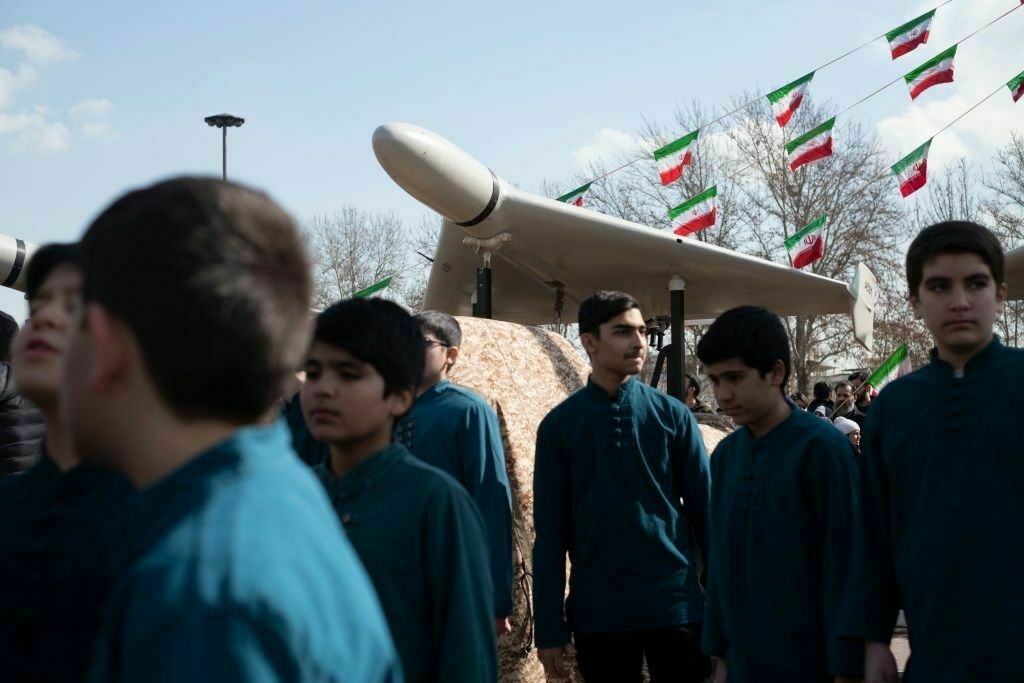
Iranian youth stand under an Iranian-made Shahed-136 unmanned aerial vehicle in Tehran, Iran, on Feb. 11, 2023. (Morteza Nikoubazl / NurPhoto / Getty Images) Shaheds have been the main combat drones used by Russia to attack Ukrainian cities.
In 2024, the U.S. also confirmed that Iran had started supplying ballistic missiles to Russia, although there is no evidence so far of their use against Ukraine.
The Iranian regime, which is subject to international sanctions due to its nuclear weapons program, has also been able to survive due to economic cooperation with Russia and other non-Western countries such as China, Iraq, the United Arab Emirates, and Turkey.
In 2024, Russian-Iranian trade rose 16% year-on-year to $4.8 billion, making Russia Iran’s fifth-largest trading partner.
Strategic partnership dealIn January, Russia and Iran also concluded a 20-year strategic partnership agreement.
The deal envisages cooperation in the anti-terrorism, energy, financial, and cultural spheres. It also has clauses on technology, cybersecurity, and efforts to fight money laundering and organized crime.
According to the agreement, if one of the sides is attacked, the other side cannot provide military or any other help to the aggressor.
“Russia neither has the capacity to help nor the will to do so, given its experience in Syria, where it suffered a strategic loss.”
“I would say the agreements (between Russia and Iran) are substantive — as with all strategic partnerships they have their limits; they stop short of a mutual defence pact, which is why Russia was not obligated to provide military assistance to Iran,” Emily Ferris, a Russia expert at the Royal United Services Institute, told the Kyiv Independent.
She argued that “it was an important signal of long-term intent to deepen the relationship, particularly around trade” and “suggested that neither side saw Western sanctions being eased imminently.”
Can Russia help Iran?As Russia is focused on its war against Ukraine, its ability to help Iran is very limited. The Kremlin condemned the Israeli and U.S. strikes on Iran but did not provide any material help.
"Russia is already overcommitted in Ukraine and does not have the military resources to spare to become embroiled in another conflict," Ferris said. "It did not give Iran air defense systems that could have moved the dial on the war in Iran's favor. Russia's offer of mediation was swiftly shot down by the Americans."
Quilliam also argued that "there is no evidence to suggest that Russia helped Iran in any material way during the war with Israel."
"Russia neither has the capacity to help nor the will to do so, given its experience in Syria, where it suffered a strategic loss," he added in a reference to the fall of dictator Bashar al Assad's regime in December 2024. "Should the war resume, it is unlikely that Russia will provide material aid to Iran, at least in the short term."
There are some ways in which Moscow is still able to help Iran, however.
"Iran will need diplomatic backing in the (UN) Security Council going forward, which Russia could provide," Aron Lund, a Middle East analyst at Century International, told the Kyiv Independent. "It will need help rebuilding its air defenses and its missile program. Whether Russia can afford to sell or share that kind of equipment is an open question."
He added that "military-industrial collaboration" between Iran and Russia is likely to continue.
Could Russia help Iran with nukes?One of the areas where Russia and Iran have cooperated is the nuclear sector.
Israel's main military objective in Iran was the destruction of nuclear facilities.
The Israeli government justified the attacks by saying that Iran was on the verge of creating a nuclear bomb. The Israeli government has sought to prevent Tehran from obtaining nuclear weapons as Iranian leaders have repeatedly called for eliminating Israel.
The International Atomic Energy Agency (IAEA) said on June 12 that Iran was in breach of its nuclear non-proliferation obligations, although IAEA Director General Rafael Grossi said in a June interview he had no proof that Tehran was currently developing a nuclear weapon.
Robert Kelley, an engineer with over 35 years of experience in the U.S. Department of Energy’s nuclear weapons complex, said that Iran has the technological capacity to build a nuclear bomb and the only reason it has not done so is political.
“Did I hear former President Medvedev, from Russia, casually throwing around the ‘N word’ (nuclear!), and saying that he and other countries would supply nuclear warheads to Iran?"
"If Iran started, they could (build a nuclear bomb) in less than 18 months, probably much less," he told the Kyiv Independent. "Depends on how much they saved from the nuclear weapons program that ended in 2003 and how good their progress was. The U.S. built two different nuclear weapons designs in 18 months in the 1940s and there is a lot more to go on now."
There are different assessments of the damage caused by Israeli and U.S. strikes to Iranian nuclear facilities during the war.
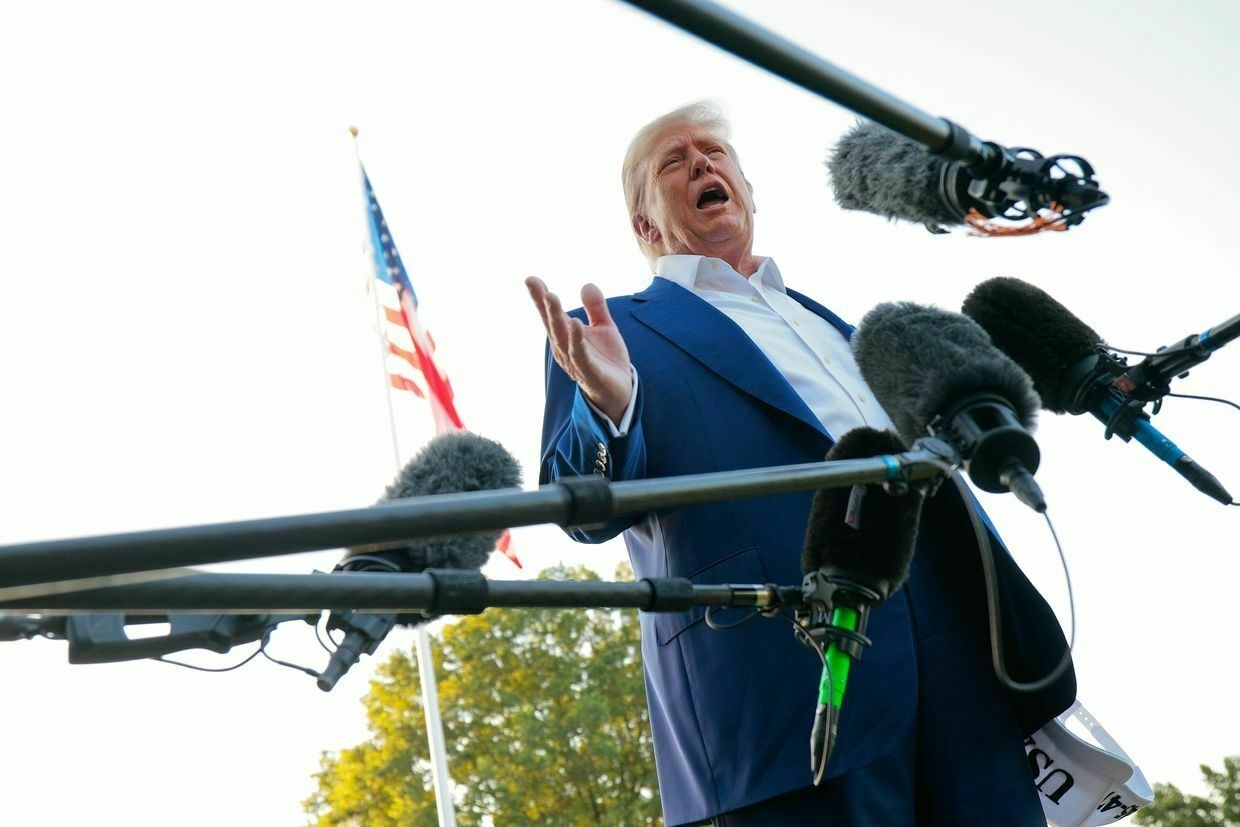
U.S. President Donald Trump speaks to reporters at the White House in Washington, DC, U.S. on June 24, 2025. (Chip Somodevilla / Getty Images) Israel argued that it had caused significant damage to Iran's nuclear weapons program, while U.S. President Donald Trump claimed it had been "obliterated."
But CNN reported on June 24 that the U.S. strikes on three Iranian nuclear facilities had not eliminated the core components of Tehran’s nuclear program and had likely delayed it by only a few months. The news outlet cited a leaked assessment by the U.S. Defense Intelligence Agency (DIA).
Former Russian President Dmitry Medvedev, deputy chairman of the country's security council, said on June 22 that "a number of countries are ready to directly supply Iran with their own nuclear warheads" — a statement that some interpreted as a hint that Russia could help Iran to develop its nuclear weapons program.
On June 23, Trump lashed out at Medvedev.
“Did I hear former President Medvedev, from Russia, casually throwing around the ‘N word’ (nuclear!), and saying that he and other countries would supply nuclear warheads to Iran?" Trump wrote on Truth Social. "The 'N word' should not be treated so casually."
Medvedev responded the same day, arguing that Russia did not intend to supply Iran with nuclear weapons.
Nuclear non-proliferationRussia has been Iran's main partner in the civilian nuclear sector. It has built Iran's Bushehr nuclear power plant and supplied the facility with enriched uranium.
At the same time, Russia has presented itself as a supporter of nuclear non-proliferation and opposed Iran's nuclear weapons program.
In 2015, Russia — along with the U.S., China, France, the U.K. and Germany — signed a deal to limit the Iranian nuclear program in return for sanctions relief.
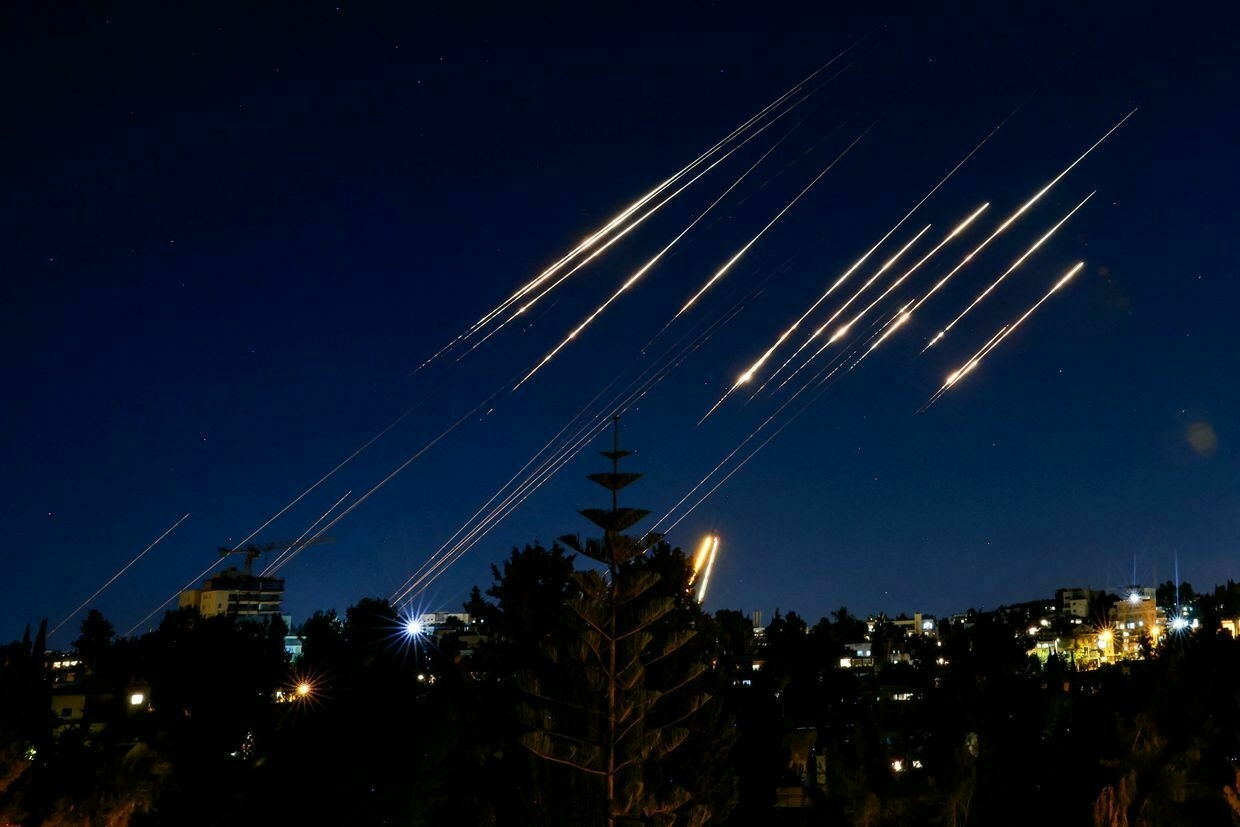
Missiles fired from Iran are pictured in the night sky over Jerusalem, Israel, on June 14, 2025. (Menahem Kahana / AFP via Getty Images) 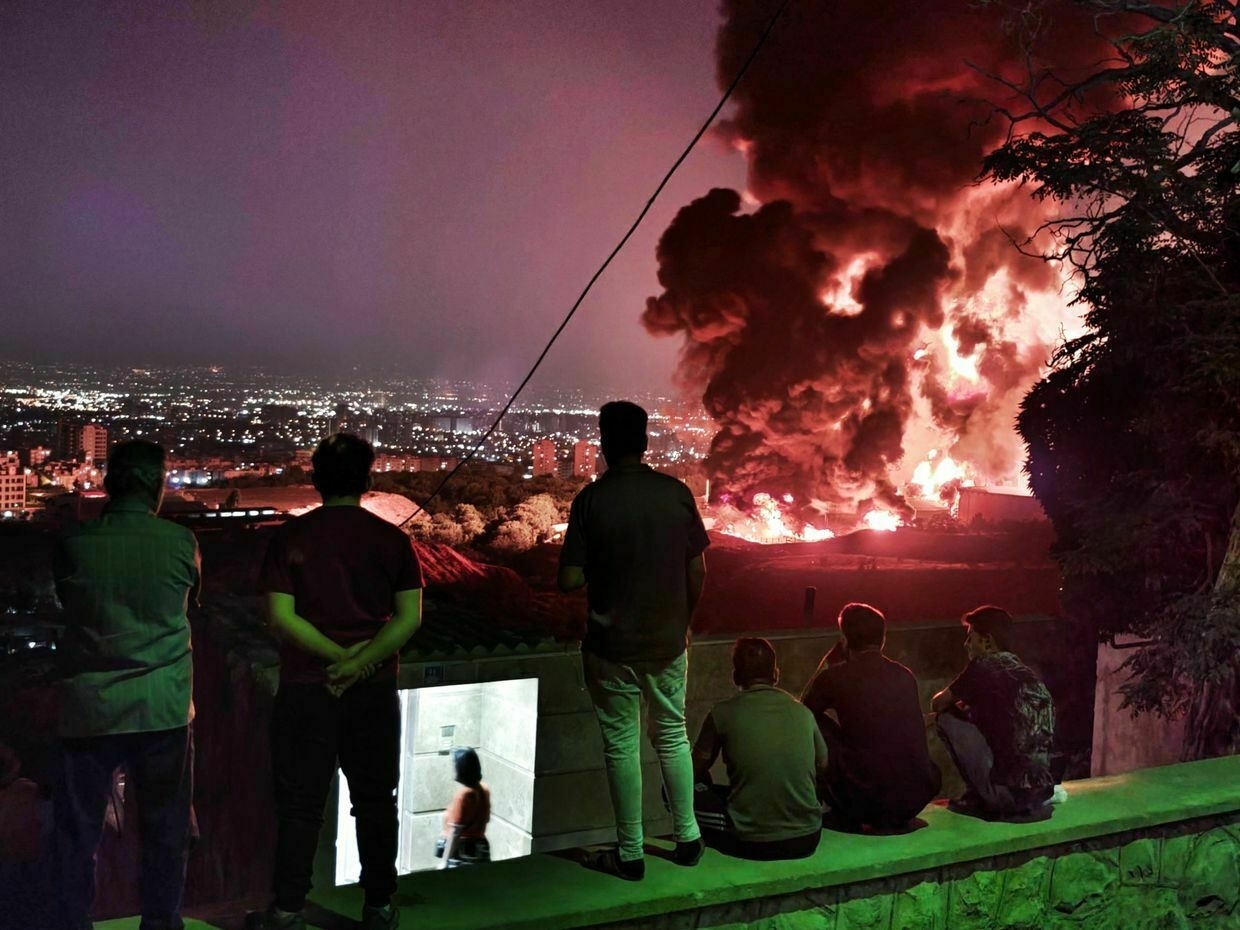
People observe fire and smoke from an Israeli attack on the Shahran oil depot in Tehran, Iran, on June 15, 2025. (Stringer/Getty Images) "So far, Russia has supported non-proliferation efforts in Iran," Marion Messmer, an arms control expert at Chatham House, told the Kyiv Indendent. "It doesn’t seem likely that a nuclear-armed Iran is in Russia’s interest — it would be disruptive in the Middle East, and it would give Iran more power when it’s likely that Russia prefers Iran to be the weaker party in the relationship."
Quilliam said that Russia "is unlikely to disrupt efforts to end Iran's nuclear program."
He added, however, that Moscow "may seek either to frustrate those efforts or come up with a creative diplomatic solution that serves its own interests, as it did with Syria’s chemical weapons issue."
Russia's regional influenceThe relationship between Moscow and Tehran is also changing because the influence of both Russia and Iran in the Middle East has decreased since 2023 as Israel dealt heavy blows to Iranian proxies.
One of them, the Gaza-based Islamist group Hamas, invaded Israeli territory, massacred 1,195 people, and took 251 people hostage in October 2023. Hezbollah, Iran's Lebanese proxy, also joined the war.
Since then, Israel has killed Hamas and Hezbollah leaders, destroyed much of their military infrastructure and invaded Gaza and southern Lebanon.
Russia's clout further diminished when the regime of Syrian dictator Bashar al-Assad, who was backed by Moscow and Tehran, collapsed in December 2024. Israel used the ensuing chaos to destroy the regime's military facilities and invaded southwestern Syria.
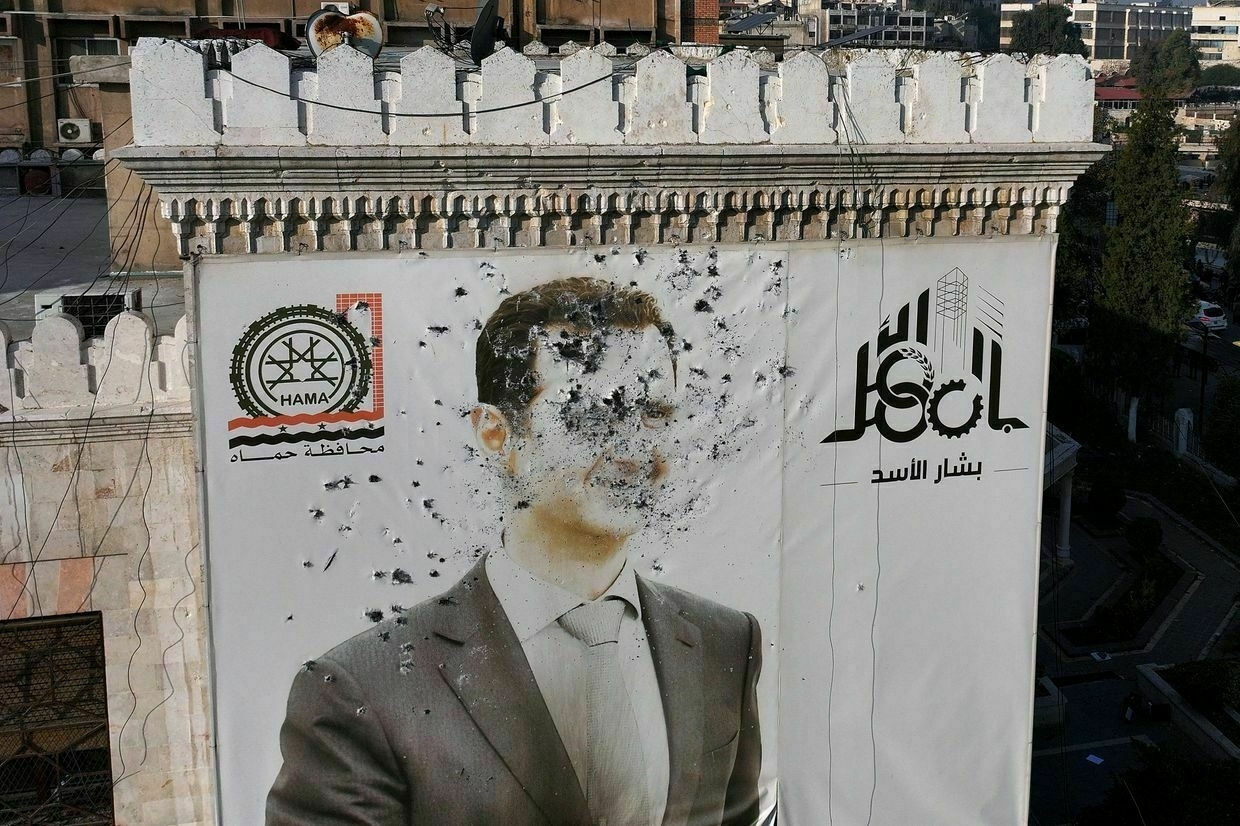
A bullet-riddled portrait of Syrian President Bashar al-Assad adorns Hama’s municipality building after it was defaced following the capture of the city by anti-government fighters in Hama, Syria, on Dec. 6, 2024. (Omar Haj Kadour / AFP via Getty Images) Furthermore, Israel's attacks on Iran in 2024 and 2025, which destroyed much of the country's air defense and damaged nuclear enrichment facilities, weakened the Iranian regime itself.
"Russia has seen its influence and ability to project power into the Middle East diminish since Oct. 7, 2023 and the collapse of the Assad regime," Quilliam said. "Regional players have come to view the U.S. as a dependable ally, but they have now come to view Russia as a liability."
Lund also argued that "Russia will need to take changed realities into account" amid the weakening of Iran and its allies.
"It’s possible that Russia will want to re-balance its Middle Eastern position over the longer term, if Iran starts looking like a resource drain that can’t offer much in return," he added. "The Iran ties have been positive for Russia, but they also come at a cost – especially in relation to Israel, but also among the Gulf Arab states."
Spoiled relations with US and IsraelApart from the regional balance of power, the Israeli-Iranian war may also have an impact on Moscow’s relationship with Washington.
The U.S. joined the war against Iran on June 22, attacking three Iranian nuclear sites with bunker buster bombs and Tomahawk cruise missiles.
Trump's support for Israel's war effort may potentially strain U.S.-Russian relations.
"Trump’s support for Israel and its participation in the Israel-Iran war is highly personalized," Quilliam said. "It has the potential to spoil relations between the U.S. and Russia but so much depends on Trump's temperament and his willingness to accommodate Putin's concerns."
He argued that Putin "will feel betrayed by Trump and, therefore, less willing to negotiate in good faith."
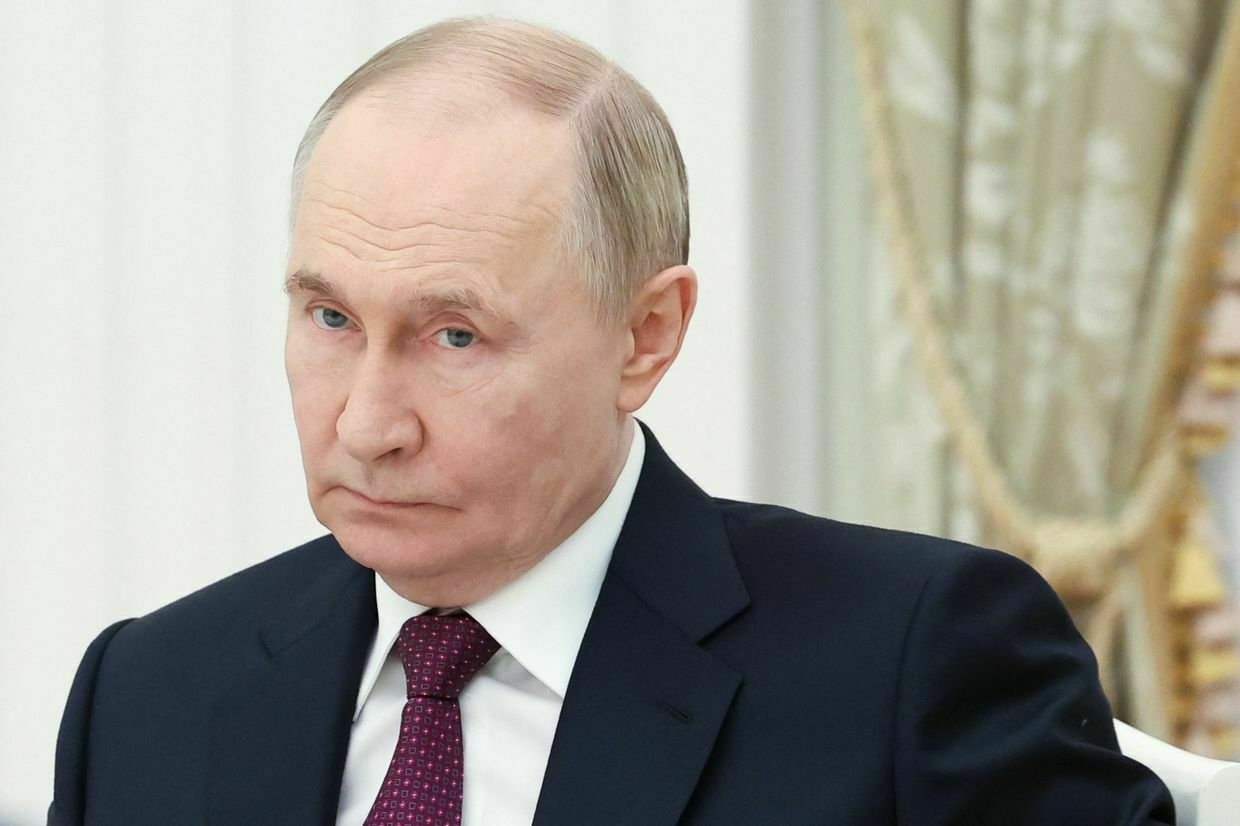
Russia’s President Vladimir Putin meets with Iran’s foreign minister at the Kremlin in Moscow, Russia, on June 23, 2025. (Alexander Kazakov / Pool / AFP via Getty Images) "As such, Trump-Putin relations will likely cool, and this may force the U.S. to recalibrate its position towards Russia vis-a-vis Ukraine," Neil continued.
But other analysts argue that the impact of the Israeli-Iranian war on U.S.-Russian relations should not be overestimated.
"Israel’s interest is ultimately to get Russia to distance itself from Iran, and that’s one reason the Israelis are reluctant to see their ties with Moscow deteriorate too much."
"I don’t think this war makes much difference to Russian-American relations, to be honest," Lund said. "They had plenty to disagree on already. It could go the other way, too, if the war is followed by a diplomatic process. Russia will try to position itself as a facilitator of any new nuclear agreement between Iran and the United States."
He also said that the U.S. "needs Russian acquiescence or support in order to get a new Iran (nuclear) deal endorsed by the Security Council."
"So there is in fact some level of shared interest here, despite the very severe Russian-U.S. disagreements on most other things relating to Iran," Lund added.
Russian-Israeli relations have also been undermined by Israel's wars with Iran and its proxies.
Analysts say, however, that the Iranian-Israeli war will not lead to a complete break between Russia and Israel.
Quilliam argued that Russian-Israeli relations "will remain unchanged, as the two countries are accustomed to deconflicting interests in theatres of war, as they did in Syria."
Lund said that Russian-Israeli relations were "bad already" before the Iranian-Israeli war.
"In so far as we are now about to enter a diplomatic phase, Russia could try to act as a go-between for the Israelis, since it has relations with both parties," he added.
"Israel’s interest is ultimately to get Russia to distance itself from Iran, and that’s one reason the Israelis are reluctant to see their ties with Moscow deteriorate too much. They need to be able to continue that bargaining."
Note from the author:
Hello! My name is Oleg Sukhov, the guy who wrote this piece for you.
I was born in Russia and moved to Ukraine in 2014 because I couldn't stand the suffocating atmosphere of that semi-totalitarian country. I used to think it might be possible to transform Russia into a liberal Western-oriented country. Now it's clear that it's a lost cause.
But at least I can atone for the crimes of my homeland by exposing its barbaric aggression against Ukraine and providing objective and independent coverage of what is going on there. I'm also trying to contribute to Ukraine's transformation into a full-fledged Western liberal democracy strong enough to defeat Russia.
Our publication needs help from every one of you — support Ukrainian wartime journalism, become a member of the Kyiv Independent.
Smashing previous monthly record, Russia launches 5,337 kamikaze drones against Ukraine during June
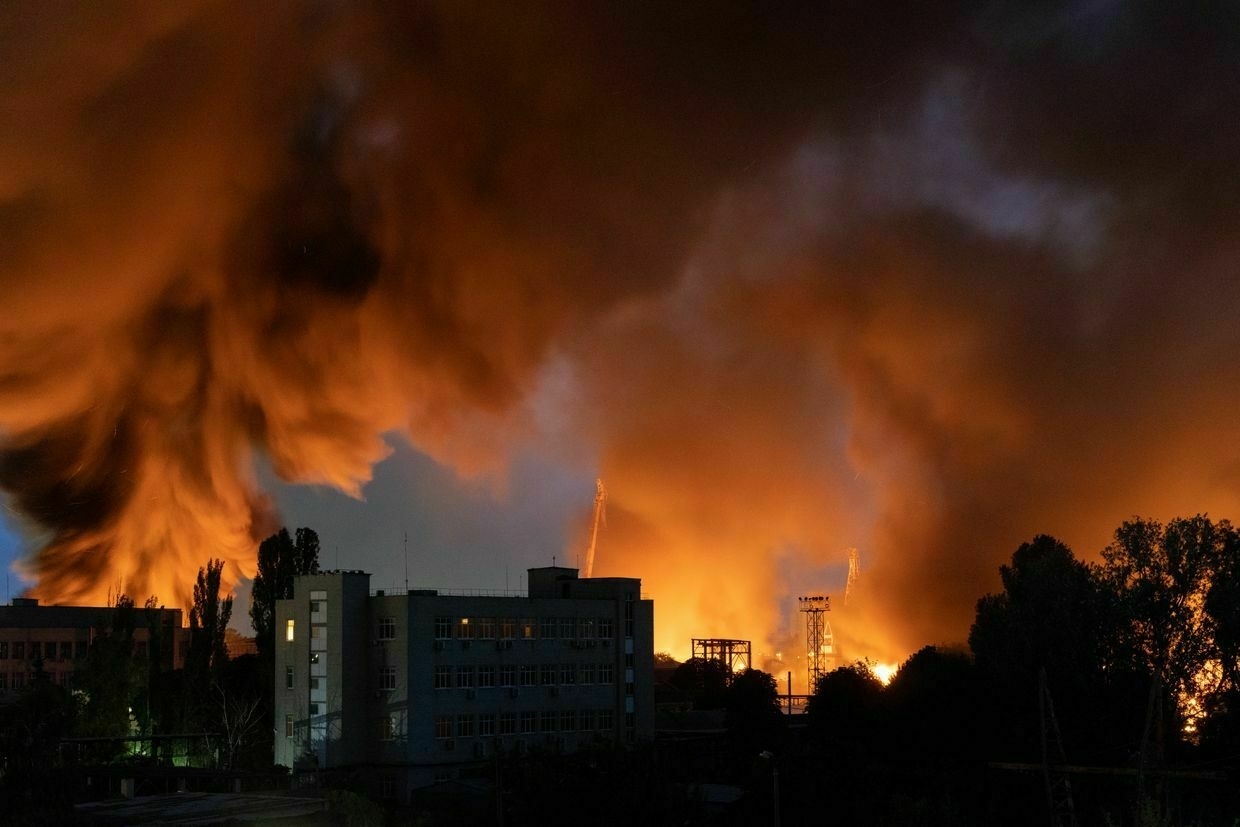
Russia launched a record 5,337 Shahed-type drones against Ukraine in June, according to data from the Ukrainian Air Force and Dragon Capital, smashing the previous record of 4,198 set in March.
Russia’s bombardments, a fact of life after three years of full-scale war, have intensified dramatically in May and June, with mass attacks becoming more frequent and more deadly.
Russia is now capable of launching in a single night as many drones as it did over an entire month in early summer 2024.
In June 2024 the number of drones launched was 332. On June 27 of this year alone Russia launched 363 drones, on June 17, 440, and on June 29, 477, in what was the largest aerial attack of the full-scale war.
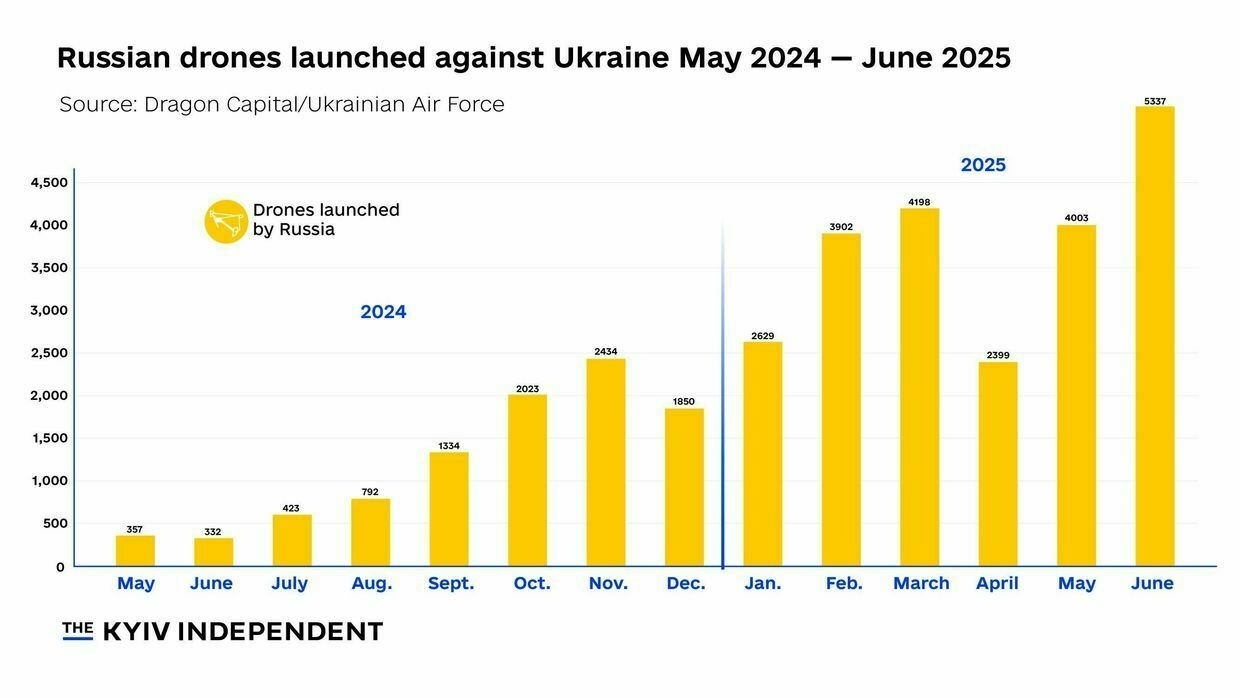
Russian drones launched against Ukraine by month (Nizar al-Rifai/The Kyiv Independent) President Volodymyr Zelensky said on June 24 that Russia has launched around 28,000 Shahed-type drones since 2022, with around 10% of them fired since the beginning of the month.
Almost all of Russia’s deep-strike drones are divided into three similar varieties — Iranian-made imported Shaheds, which have been in use since late 2022, Russian-made Gerans, which are direct copies of Shaheds, and more recently Garpiya-A1s, which look similar but use Chinese parts.
There are also inexpensive “dummy drones,” or Gerbers, which resemble Shaheds but do not carry explosives.
Gerbers distract Ukrainian radar and anti-aircraft fire and typically make up half of the drones sent into Ukraine in a given attack, a Ukrainian mobile defense group that shoots them down told the Kyiv Independent last month.
Often launched in coordination with cruise and ballistic missiles, Russian kamikaze drones have targeted Kyiv and other Ukrainian cities with renewed ferocity in recent weeks, killing dozens of civilians and injuring hundreds more.
“The windows were shattered, and smoke covered the place. We went outside and checked that everyone in the family was alive.”
On June 17, 2025 there was the deadliest attack on Kyiv since the start of the year when 30 people were killed in the capital, and 172 others injured during a nine-hour assault.
"My children were already in the bathroom. (My wife and I) were in the corridor. We heard the Shahed's descent, then the hit," Ivan Serebrianskyi, 42, an entrepreneur who lives in the damaged building told the Kyiv Independent on June 17, right after the attack.
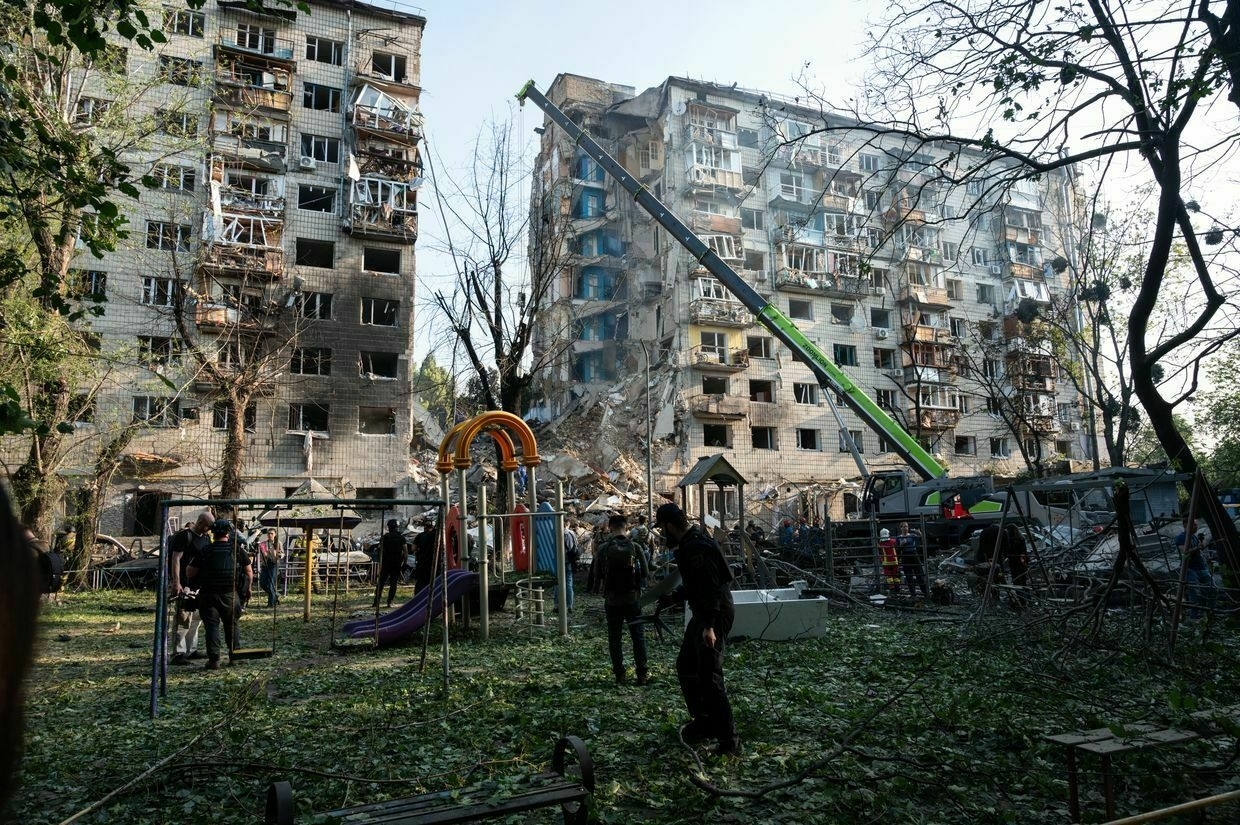
A residential building damaged by a Russian attack in Kyiv, Ukraine, on June 17, 2025. (Danylo Antoniuk / Anadolu via Getty Images) 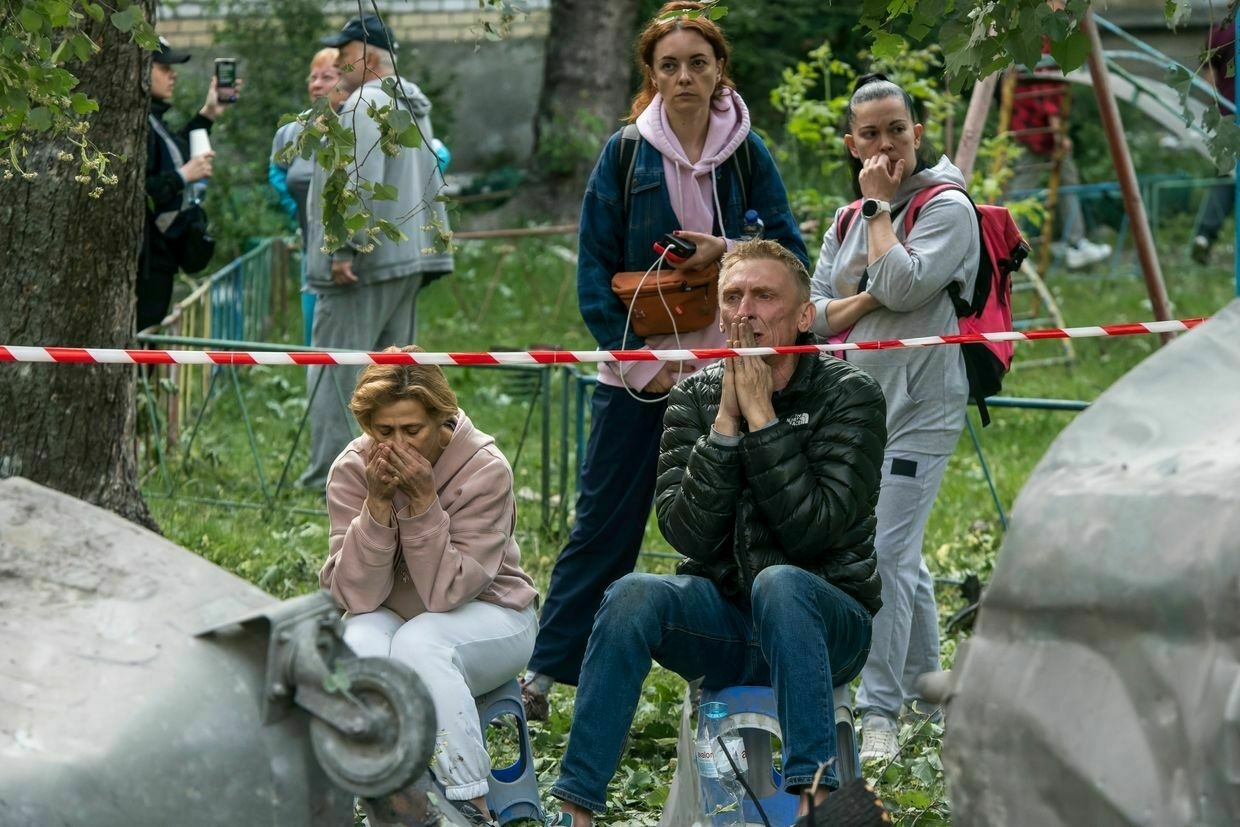
Family members of those still missing under the debris gather at the site of a residential building hit by a Russian ballistic missile in Kyiv, Ukraine, on June 17, 2025. (Maxym Marusenko / NurPhoto via Getty Images) "The windows were shattered, and smoke covered the place. We went outside and checked that everyone in the family was alive and well. It's the main thing," he added.
Over the past year and a half, there were only two days when Ukraine was not attacked by missiles and drones of various types, Ukrainian Foreign Minister Andriy Sybiga said during a joint press conference with his German Foreign Minister Johannes Wadefuhl on June 30.
Russia will soon be able to deploy more than 500 long-range drones a night to attack Ukraine as it ramps up production and builds new launch sites for them, a source in Ukraine's military intelligence (HUR) told the Kyiv Independent earlier this month.
According to the source, Russia's production rate for one type of drone — Shahed-type Gerans — is up to 70 units per day, from a reported 21 a day last year, and Moscow will soon have 12-15 new launch sites in operation.
China unveils its new ‘graphite bomb’ — here’s how they workChina’s state TV broadcaster has revealed details of a new “graphite bomb” that can cause a “complete loss of electricity” across an area of 10,000 square meters, or knock out entire power stations, the South China Morning Post reported on June 29. An animated video released by China’s CCTV showed a missile being launched from a ground-based launcher and then flying to a target where it releases 90 small submunitions. They then bounce on the ground before exploding amid a mock-up of an electri The Kyiv IndependentChris York
The Kyiv IndependentChris York
